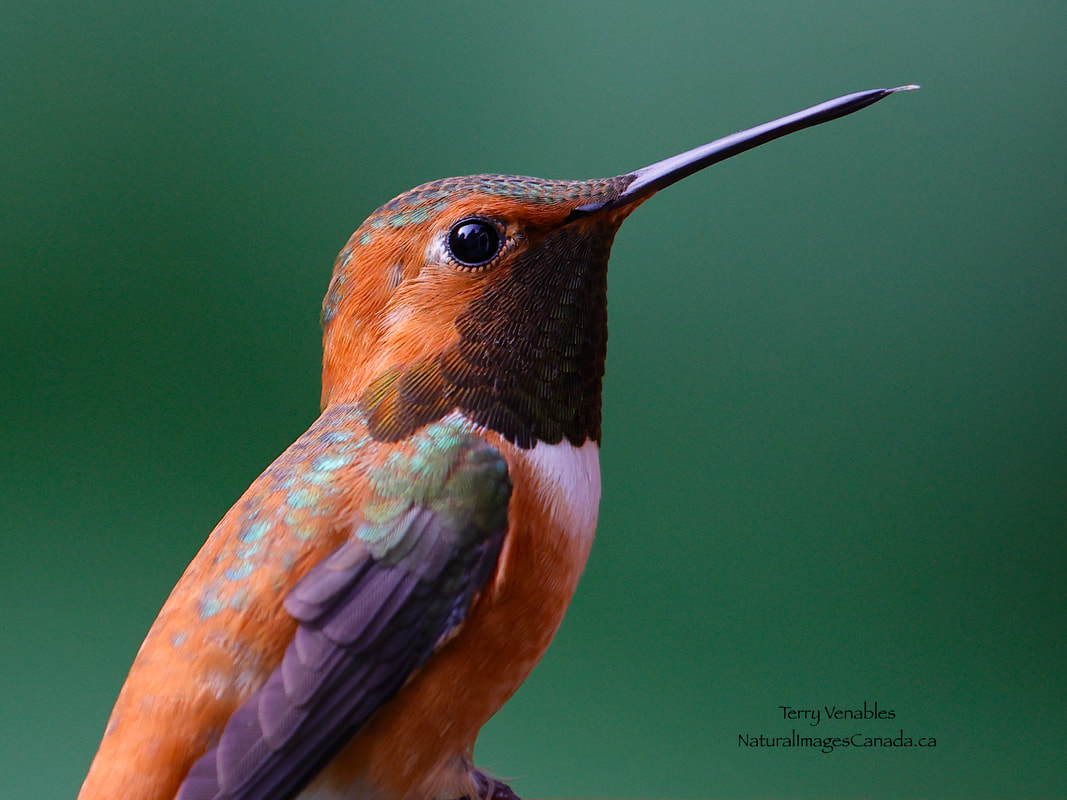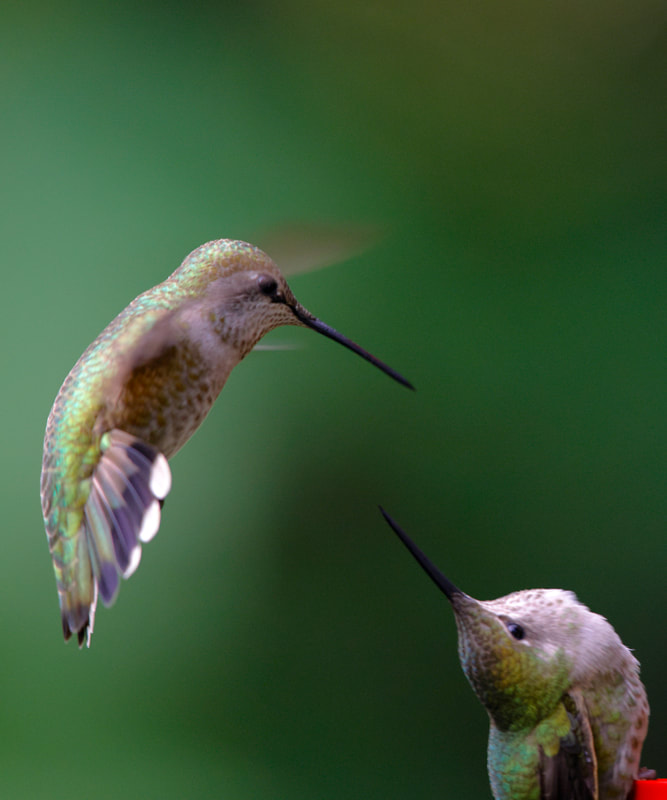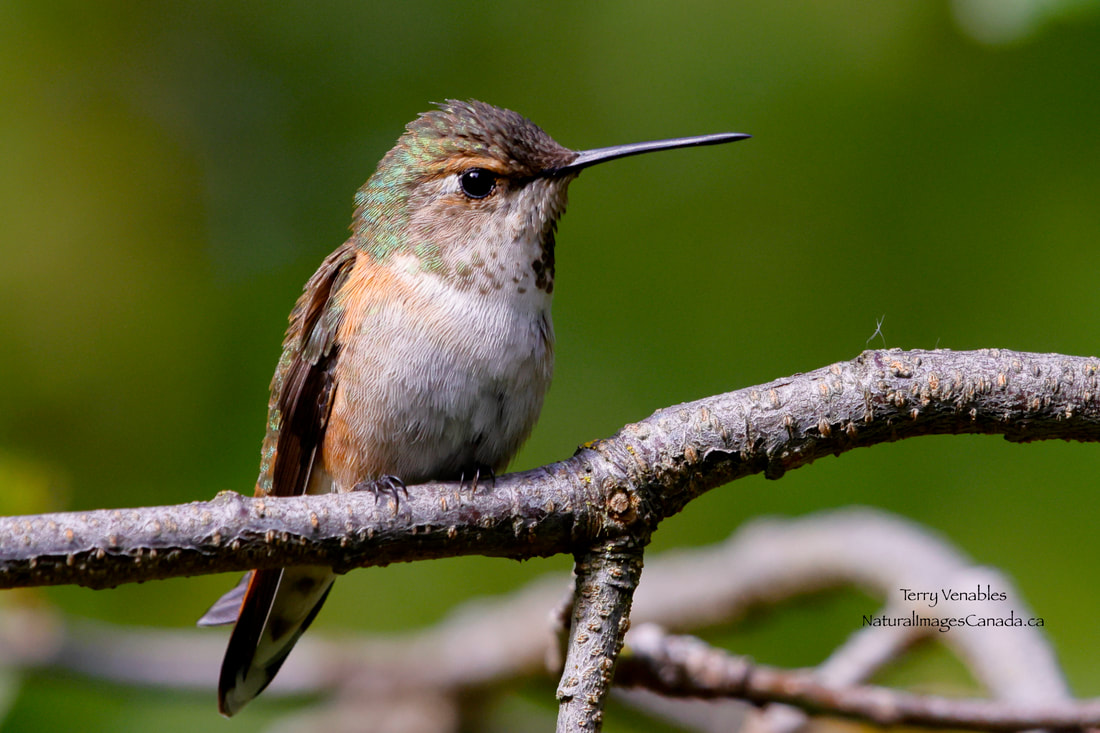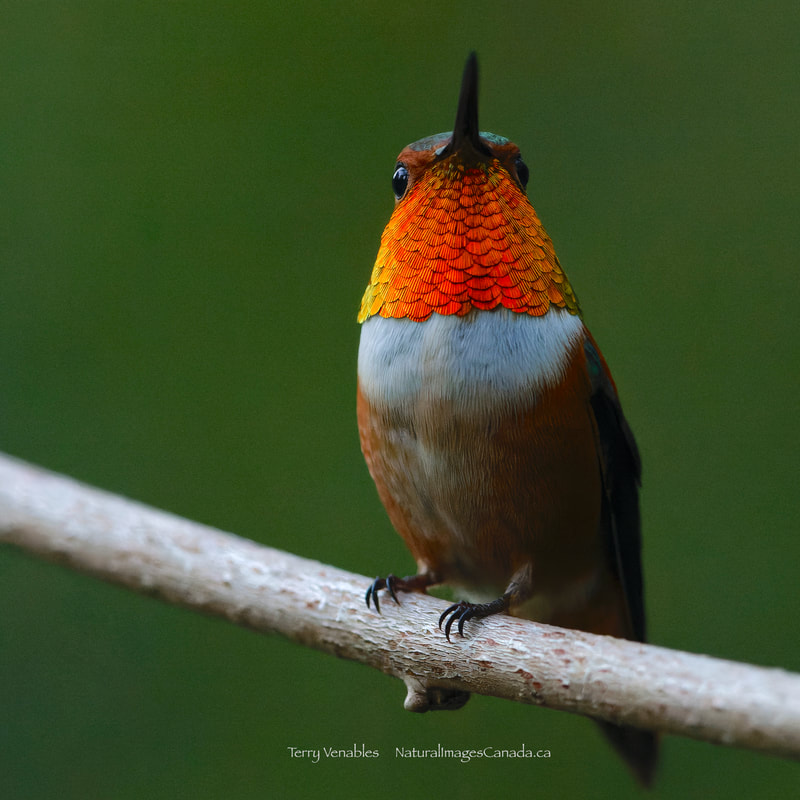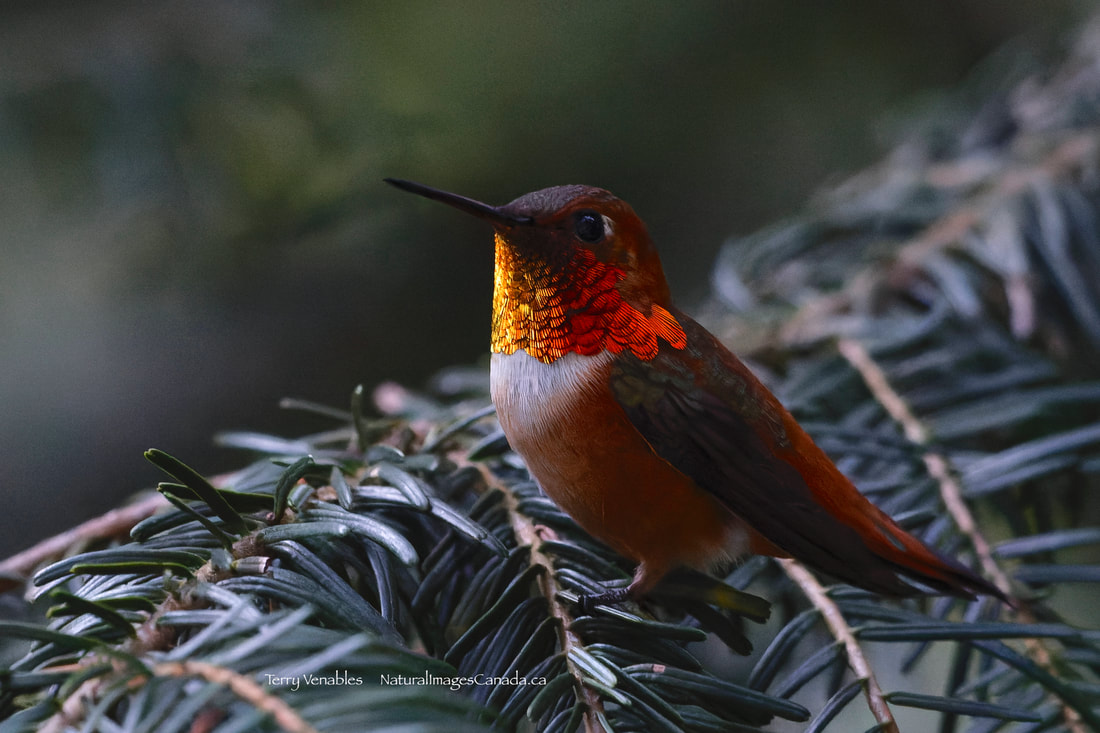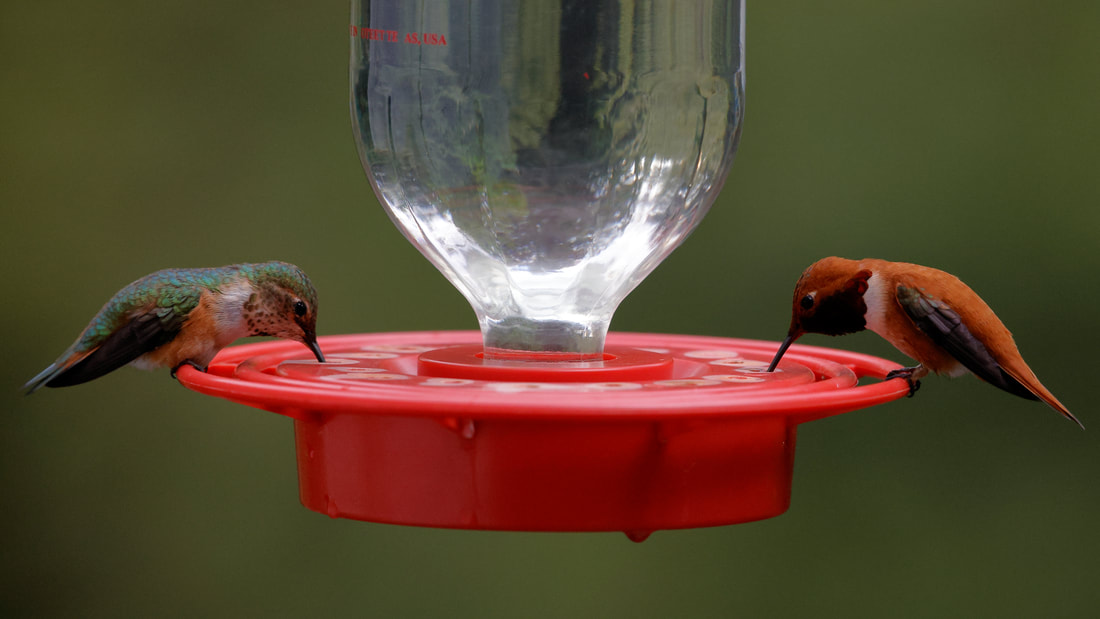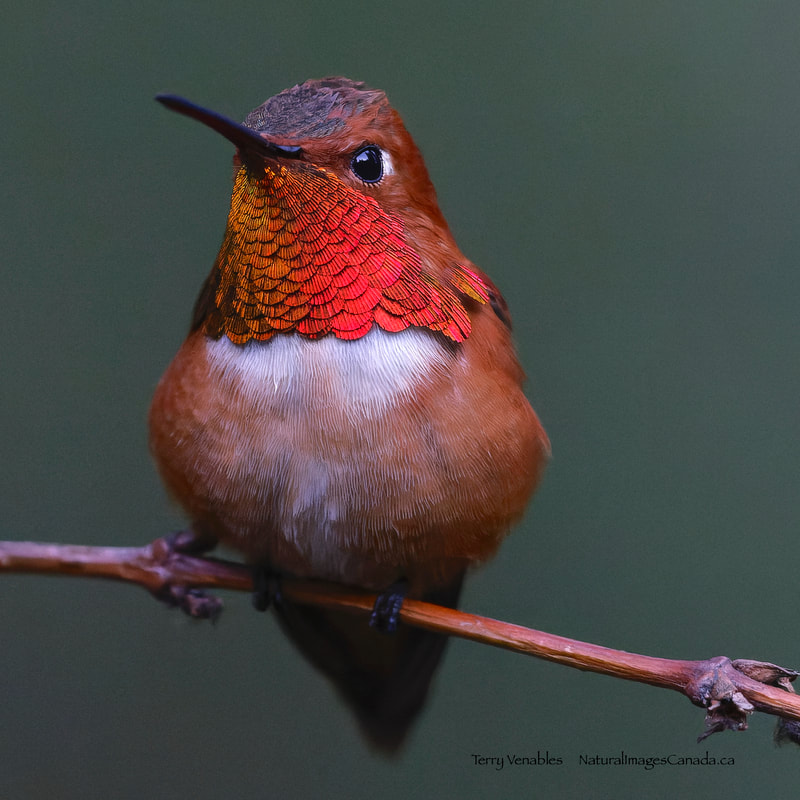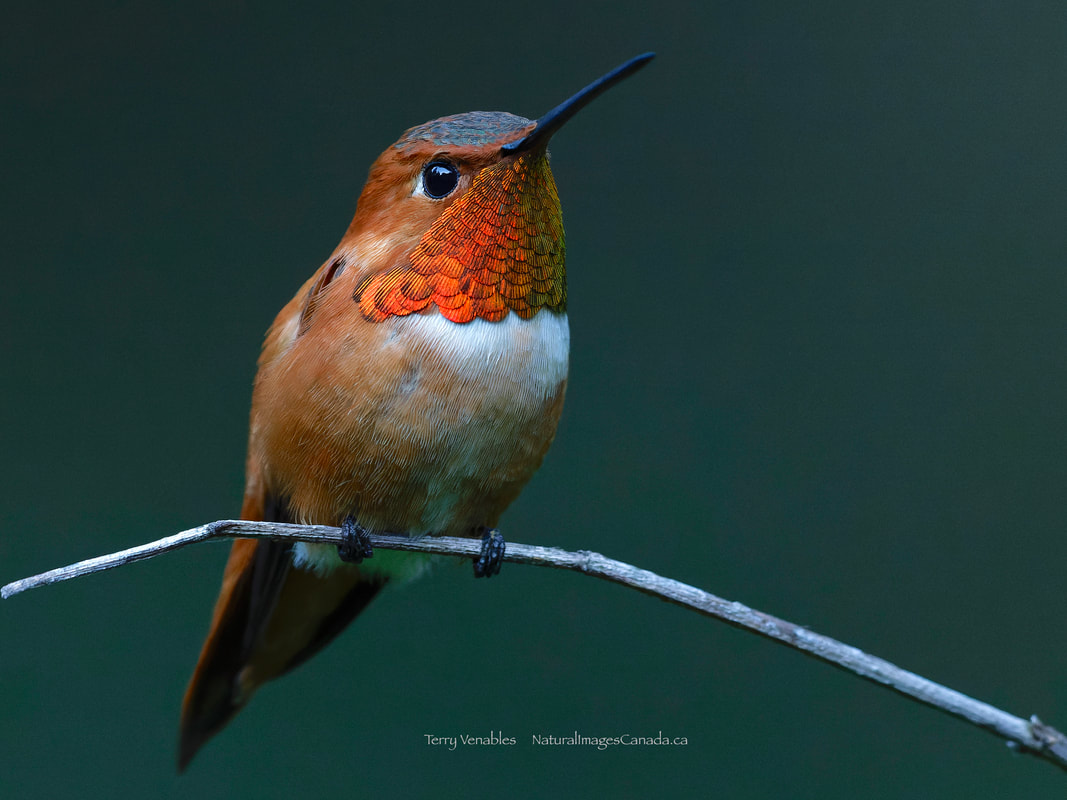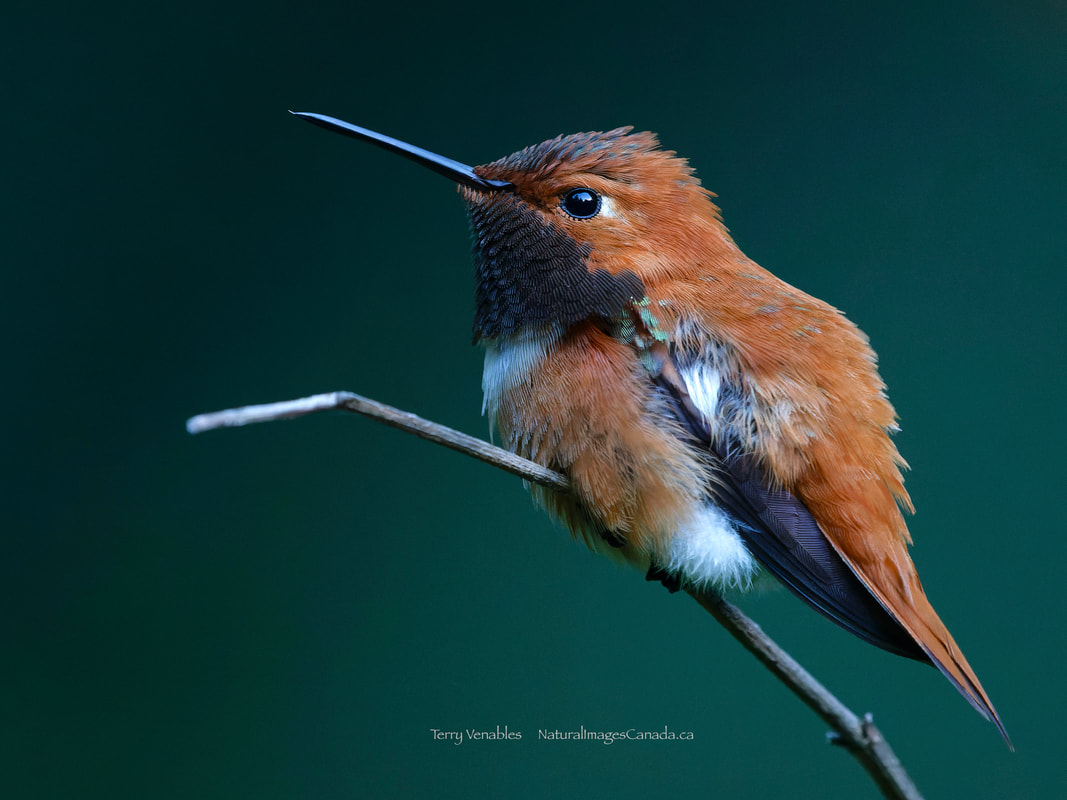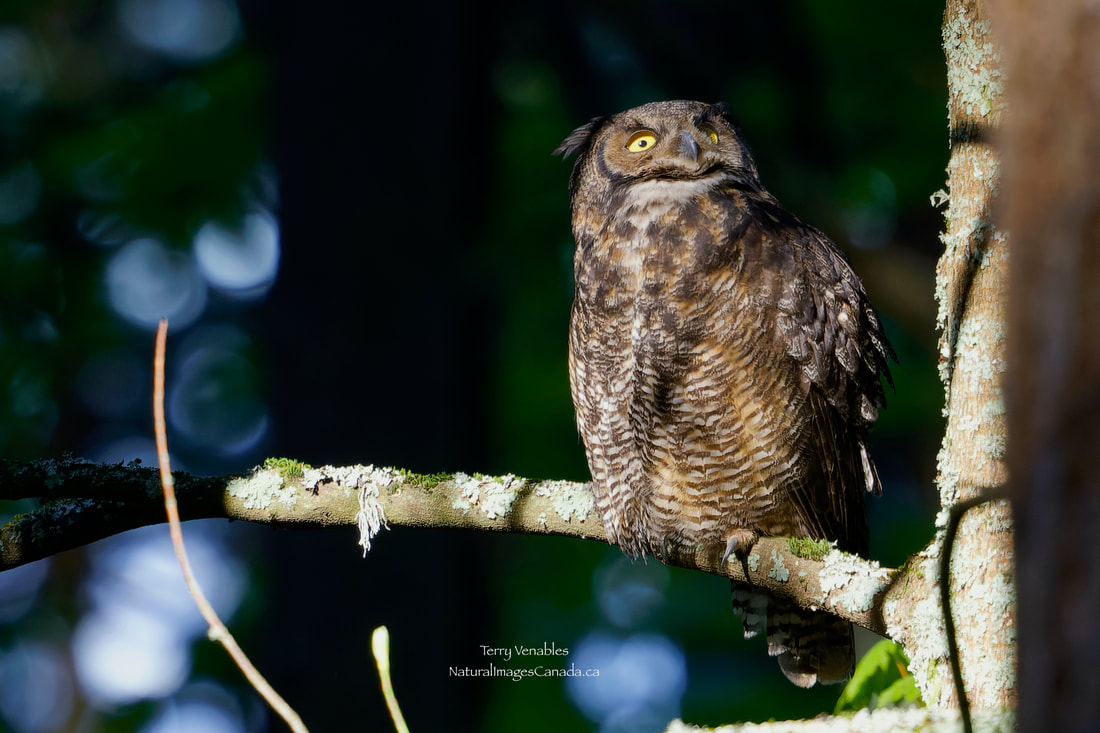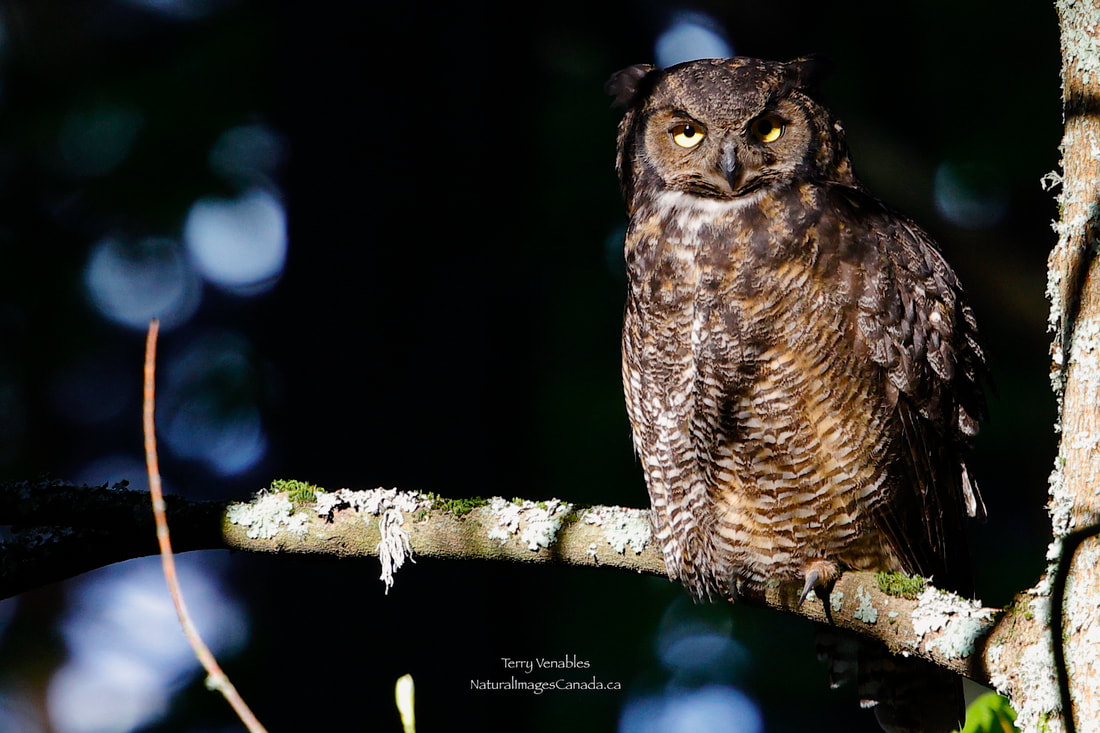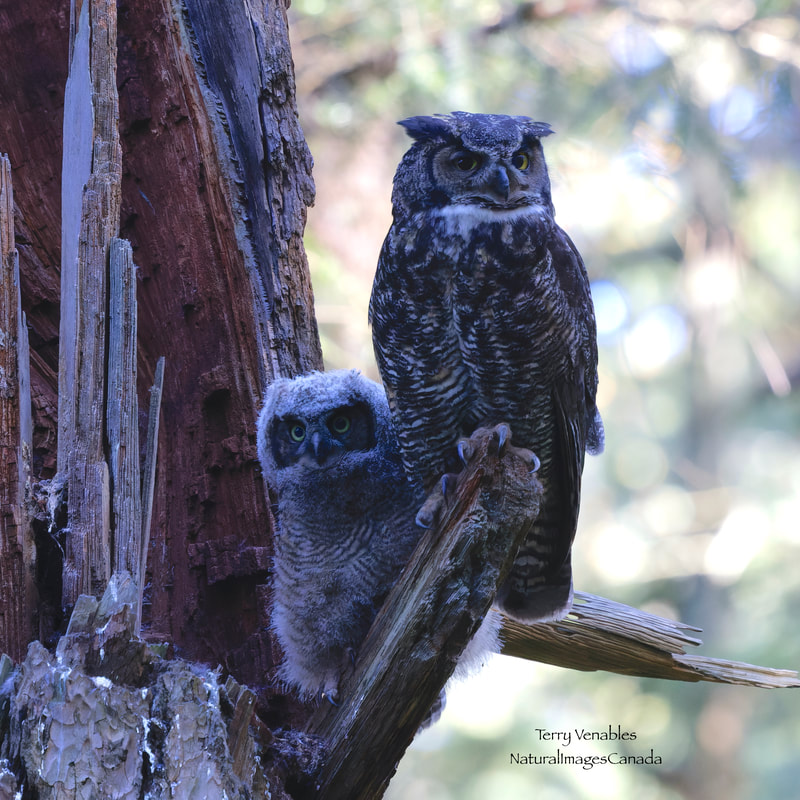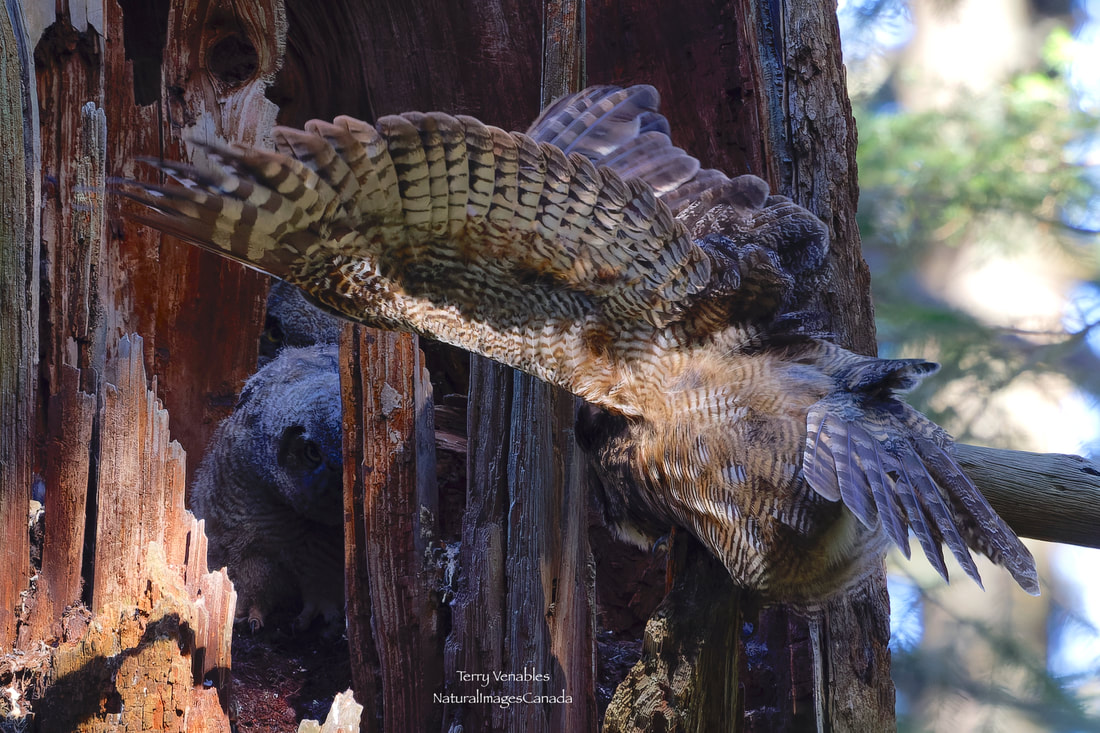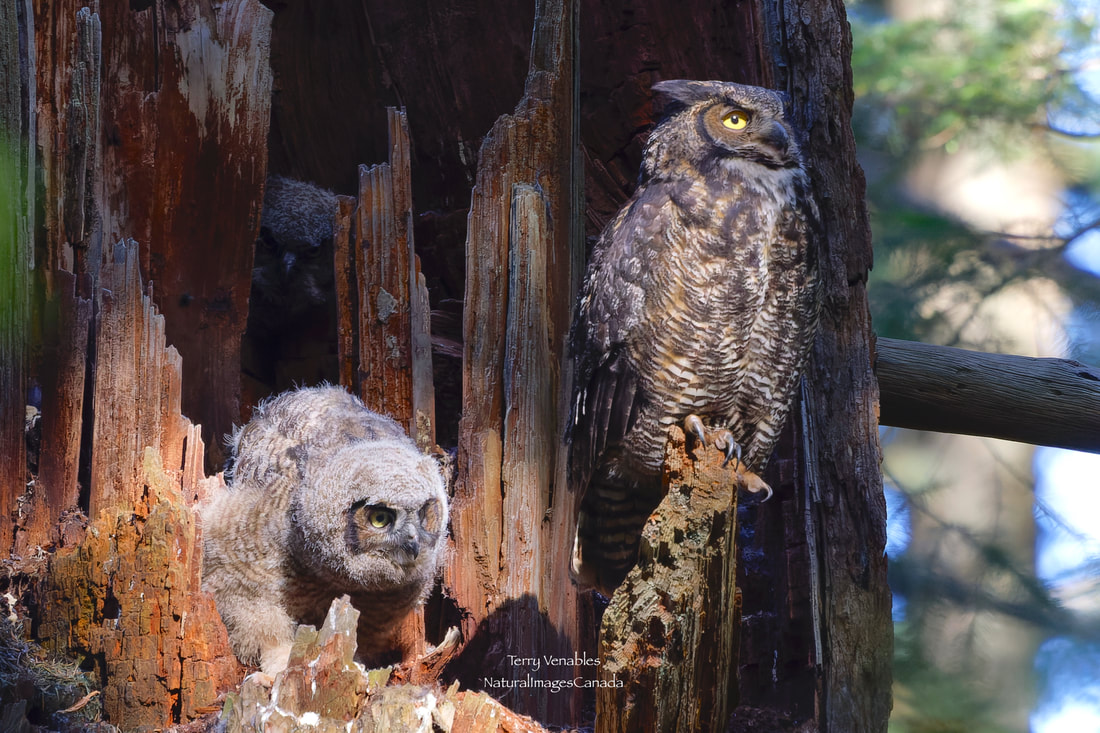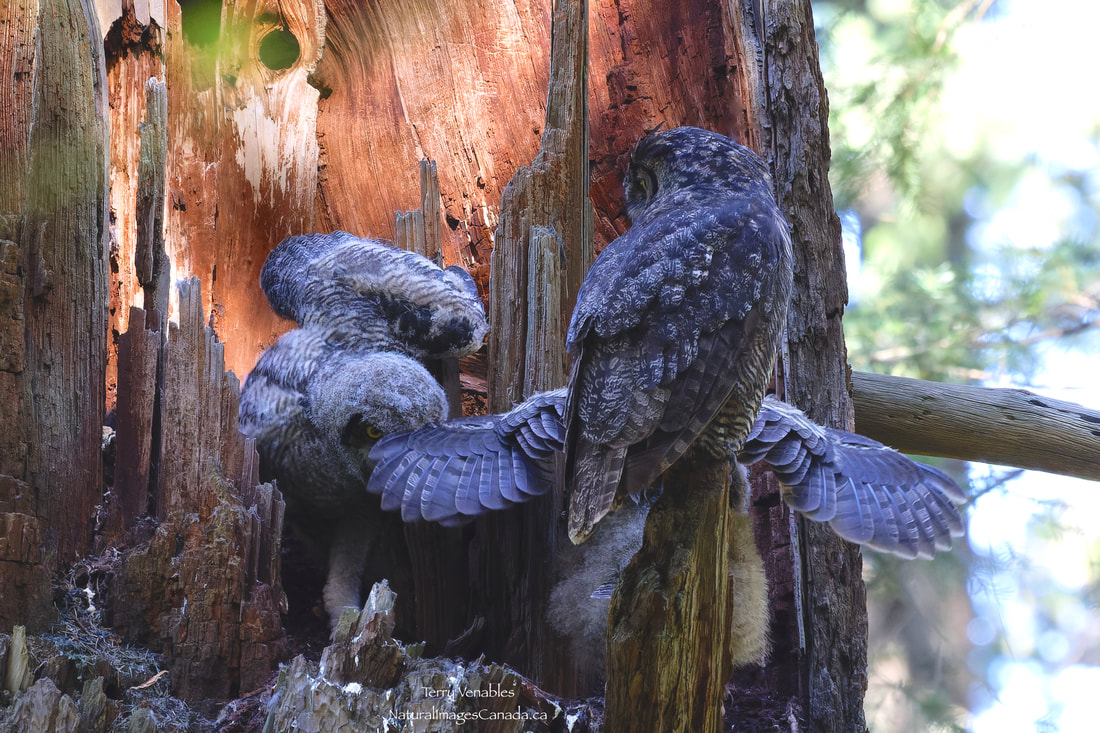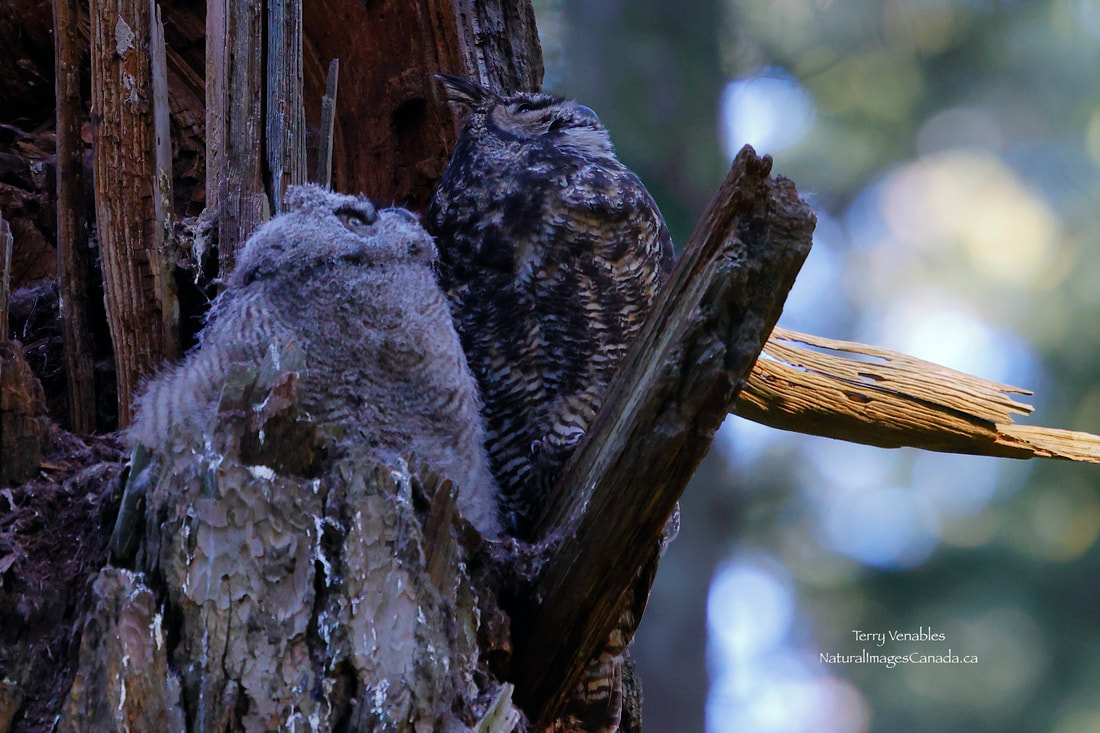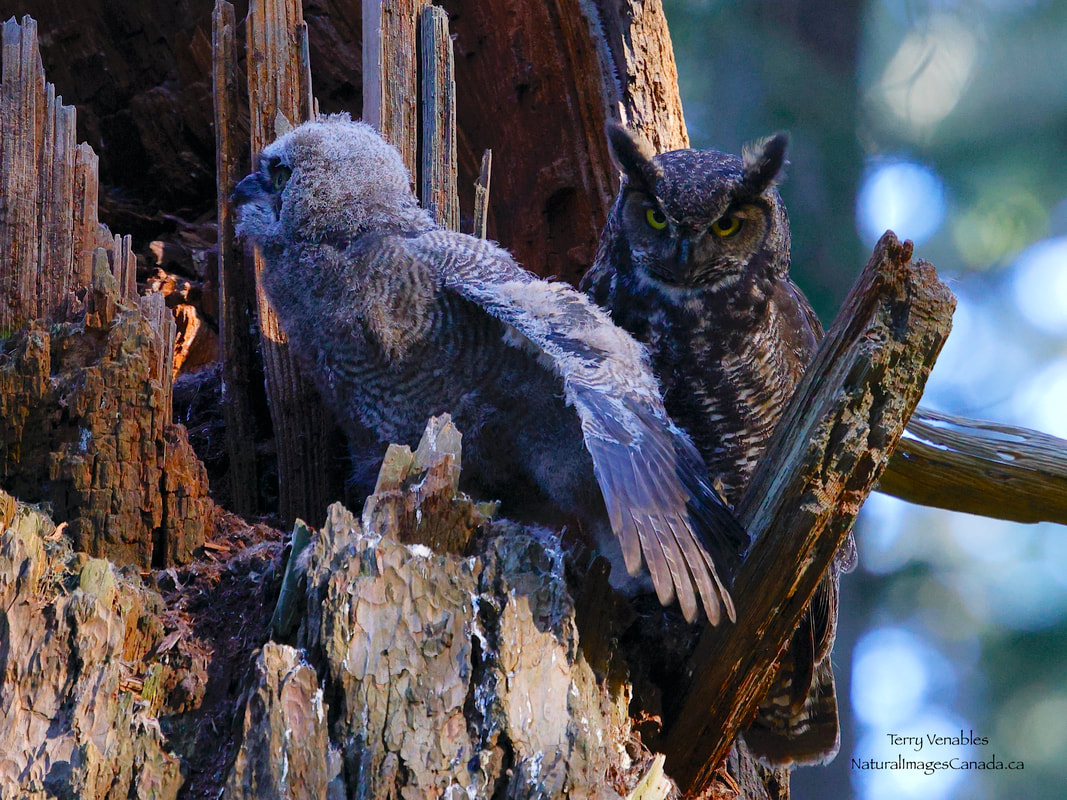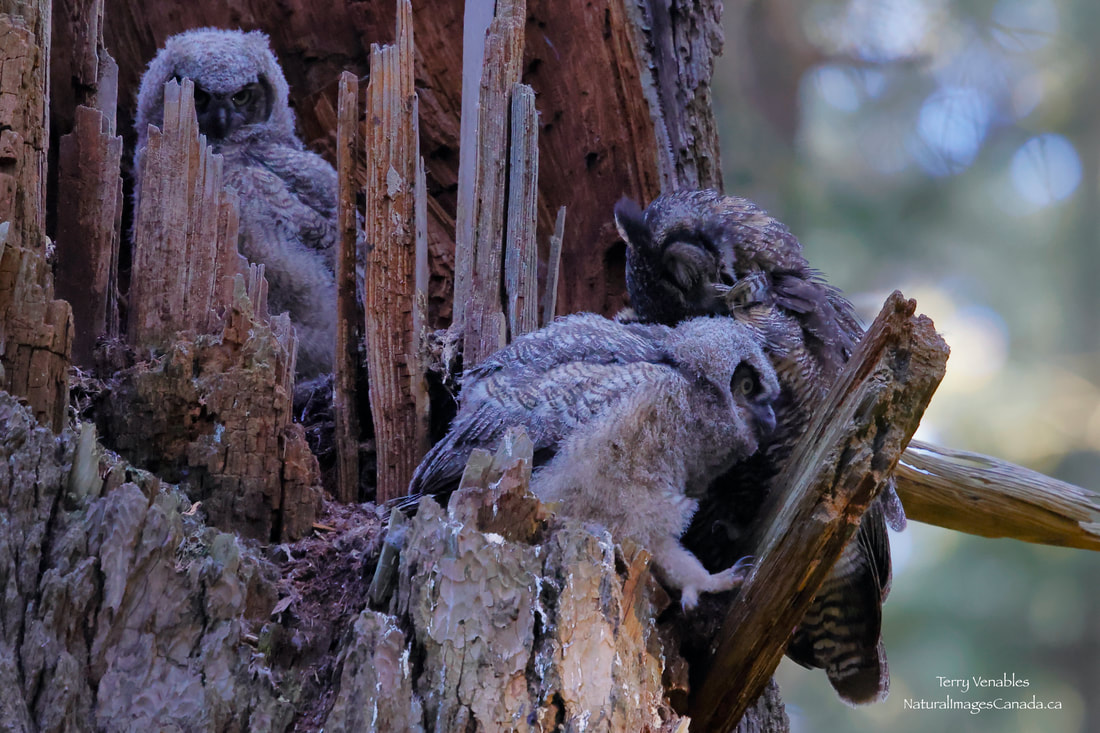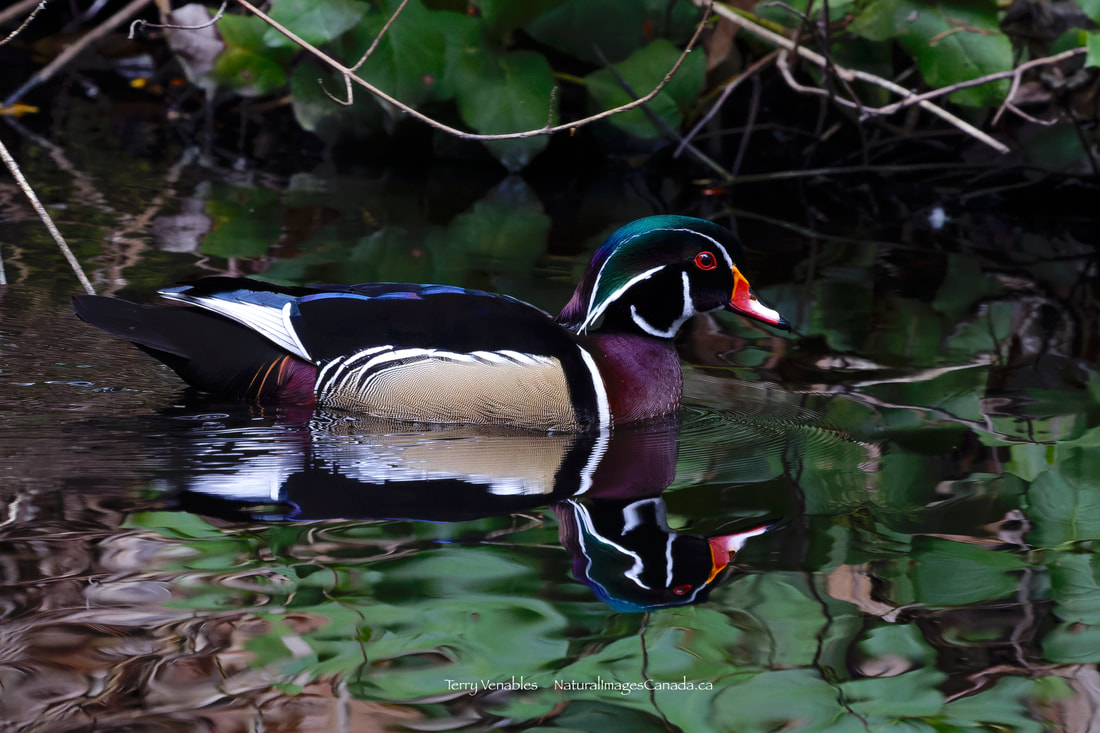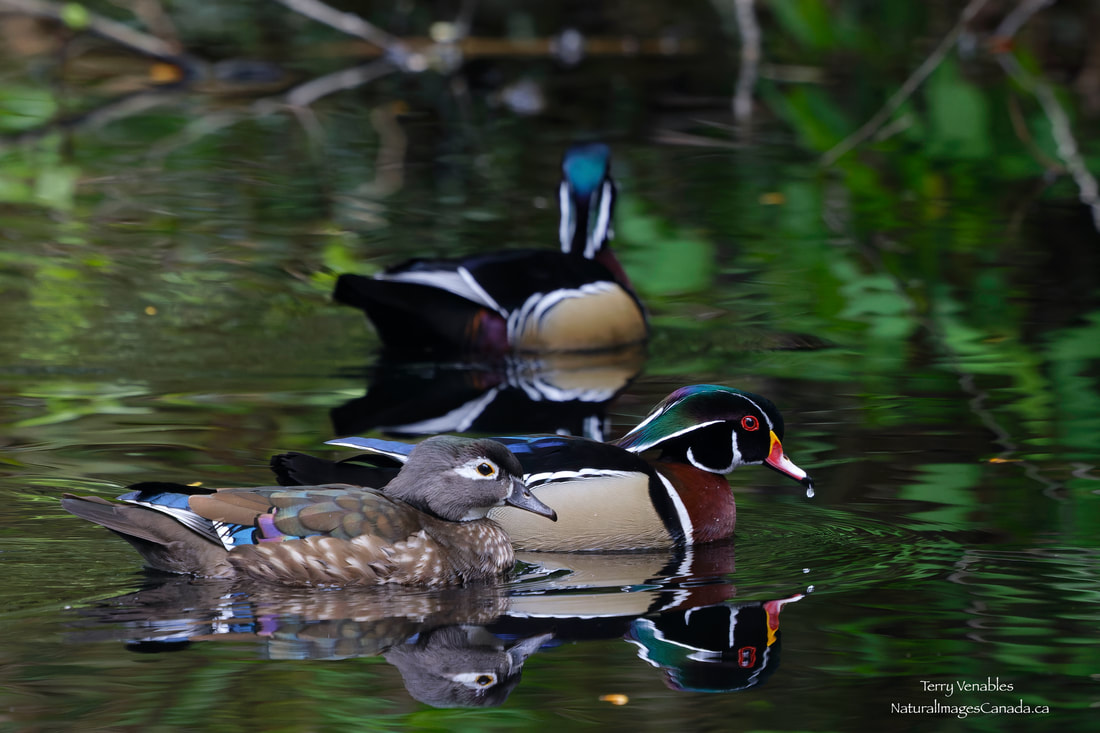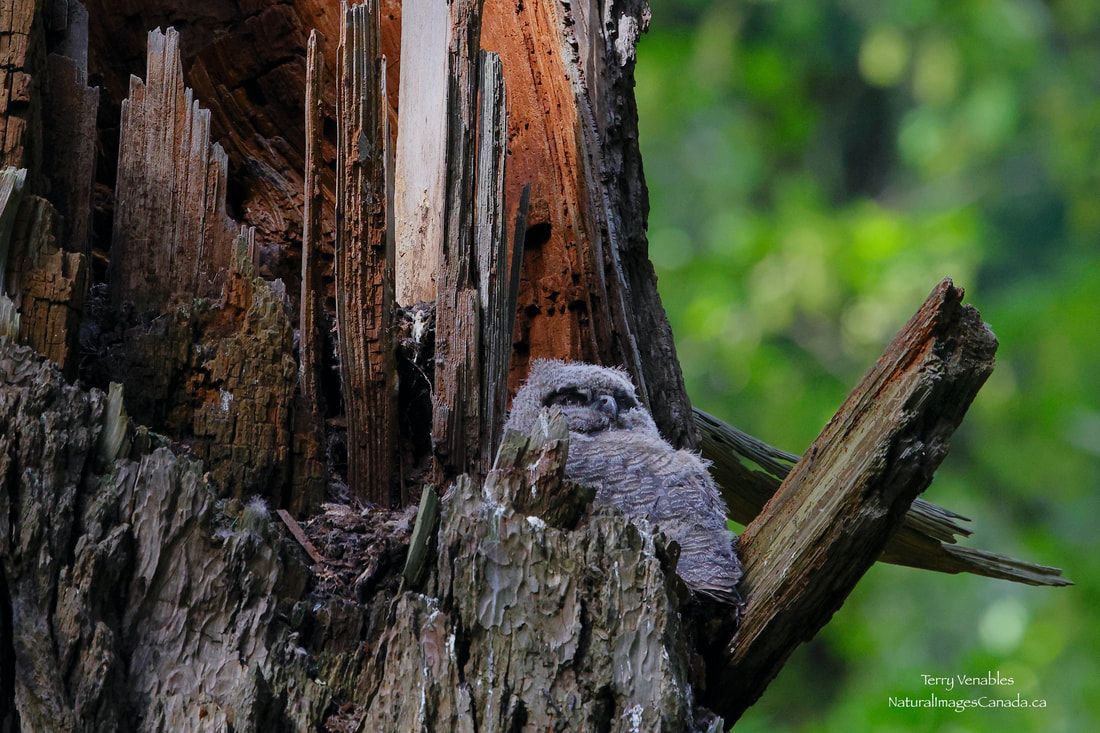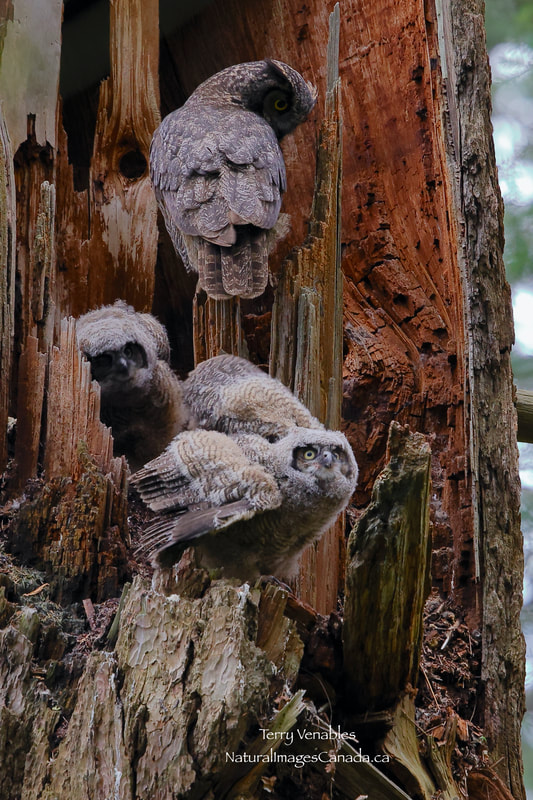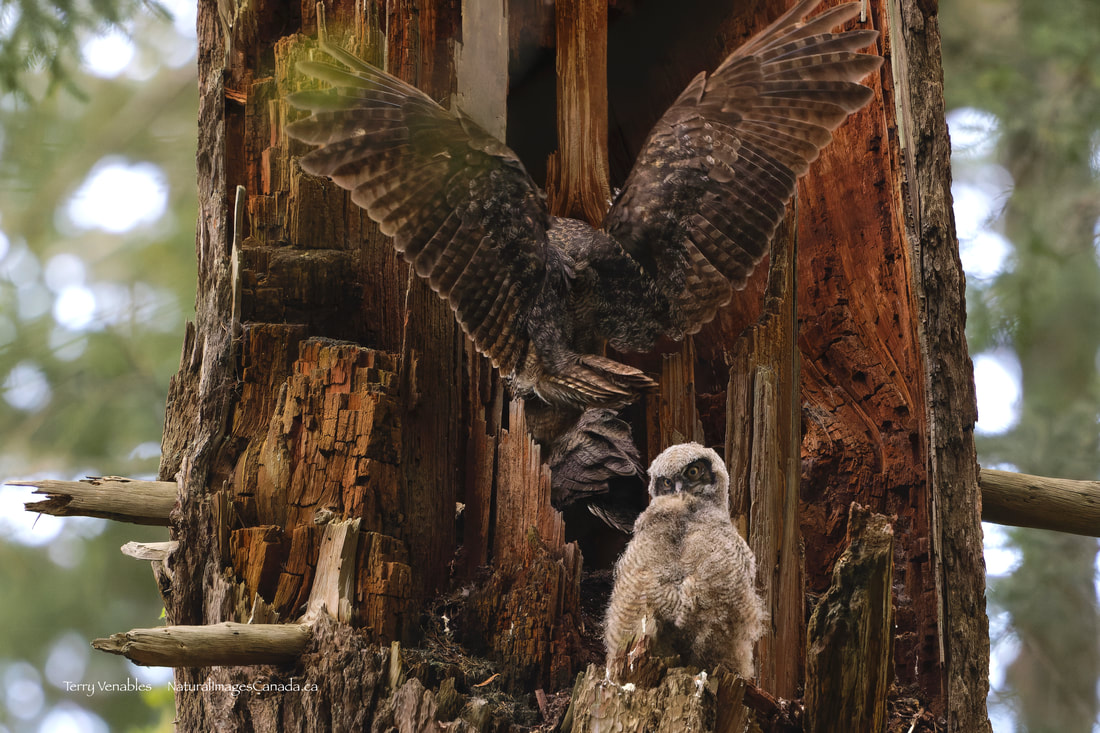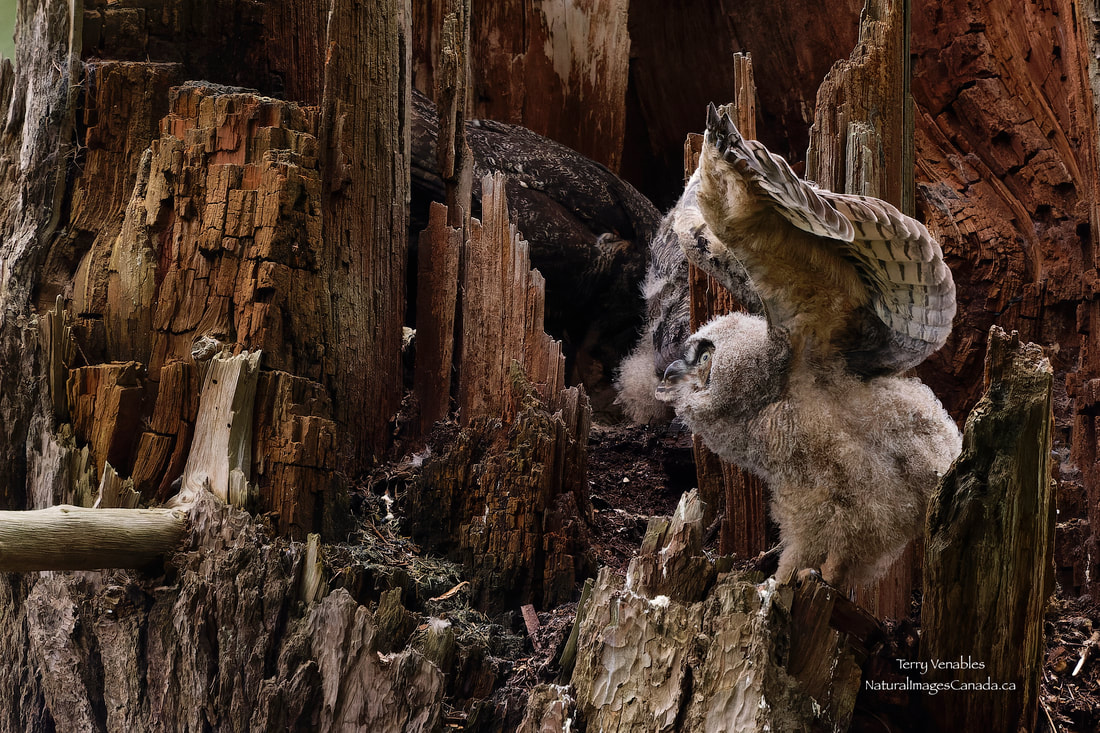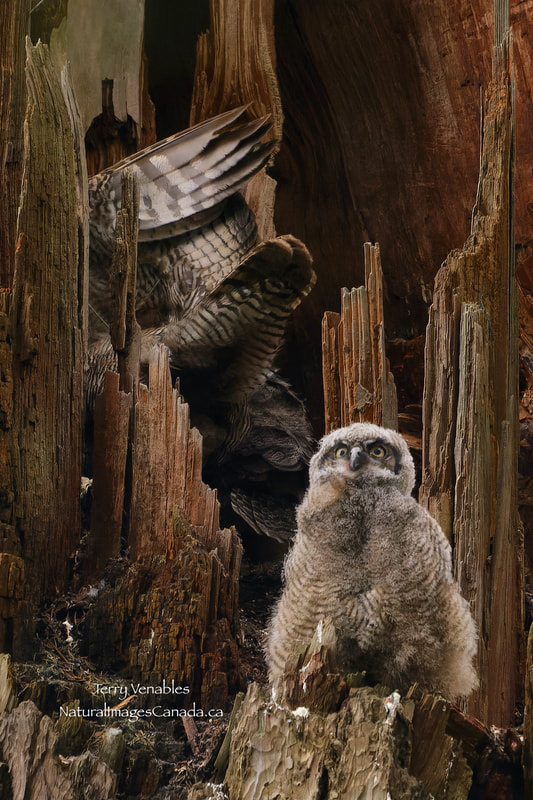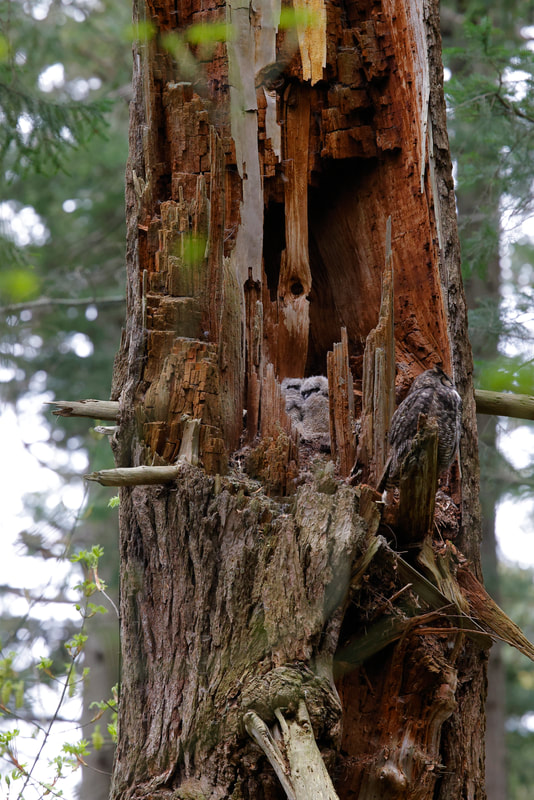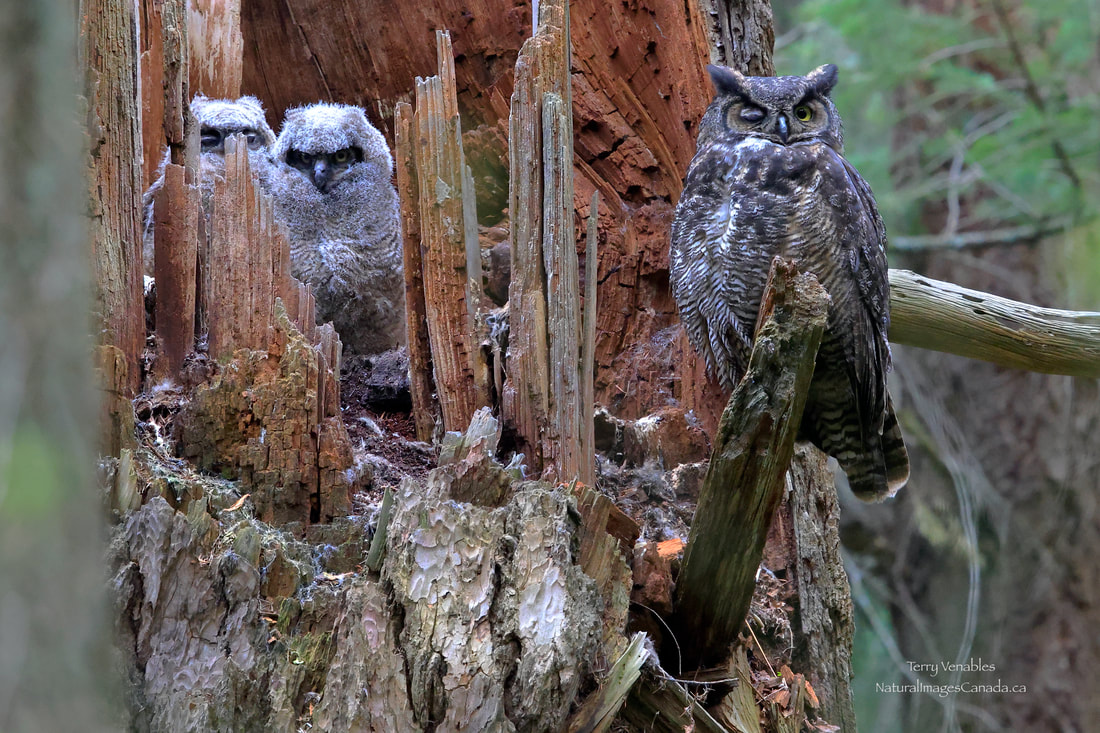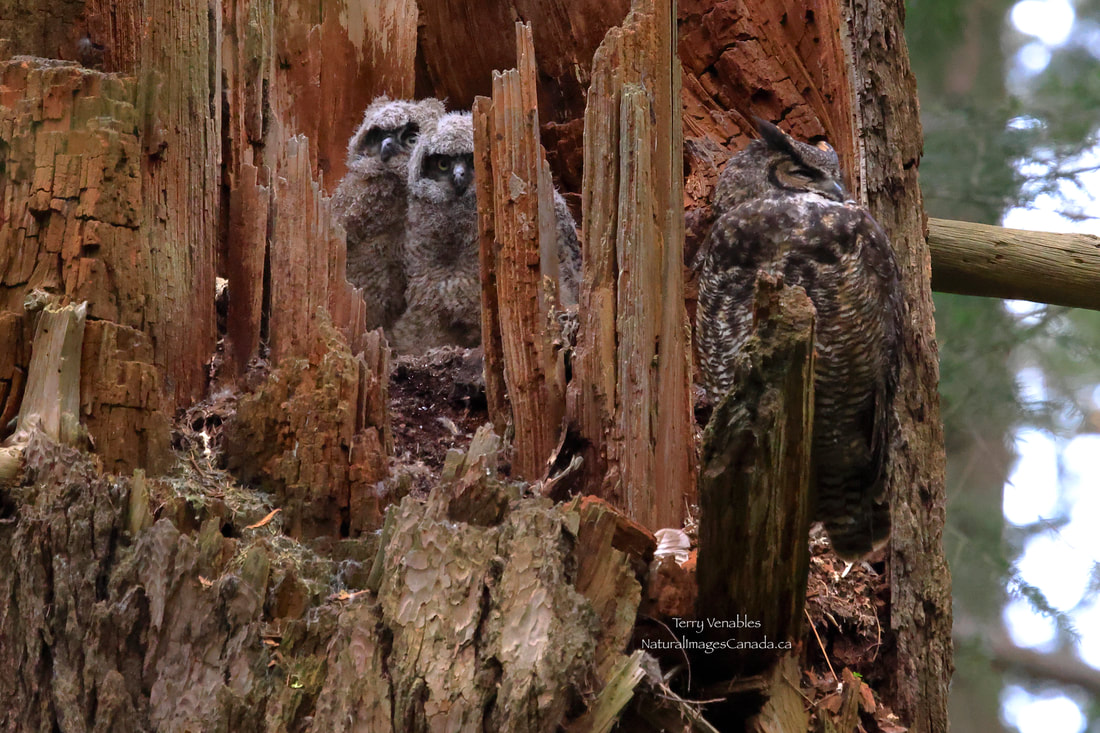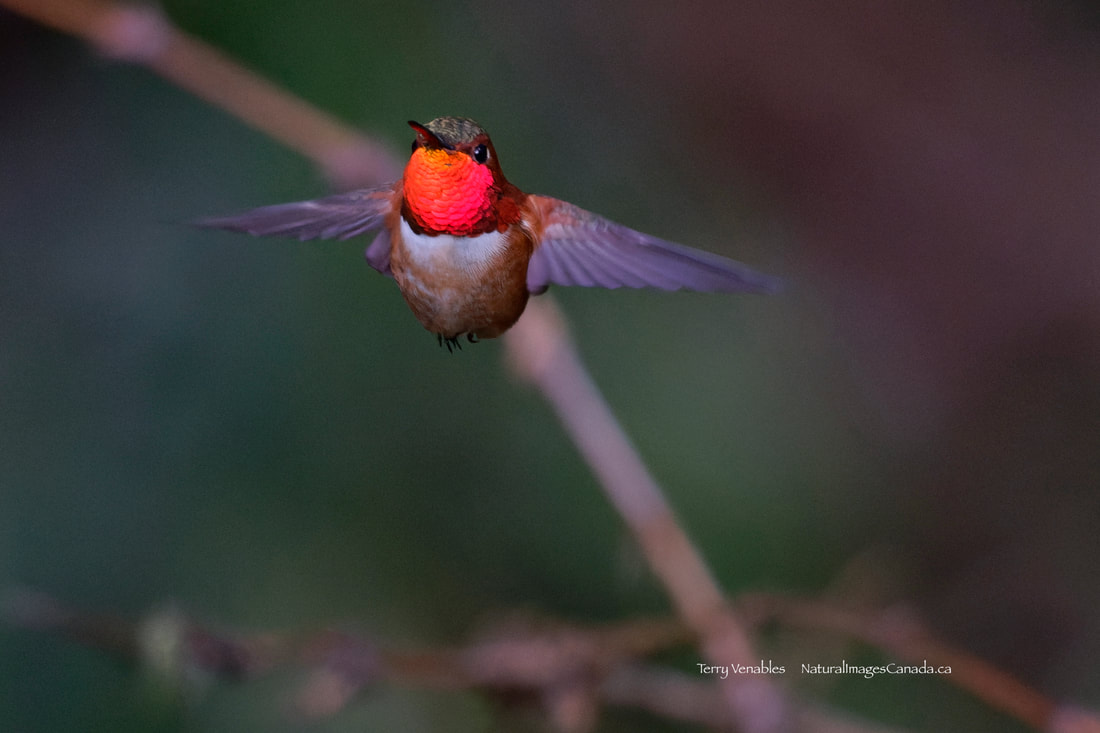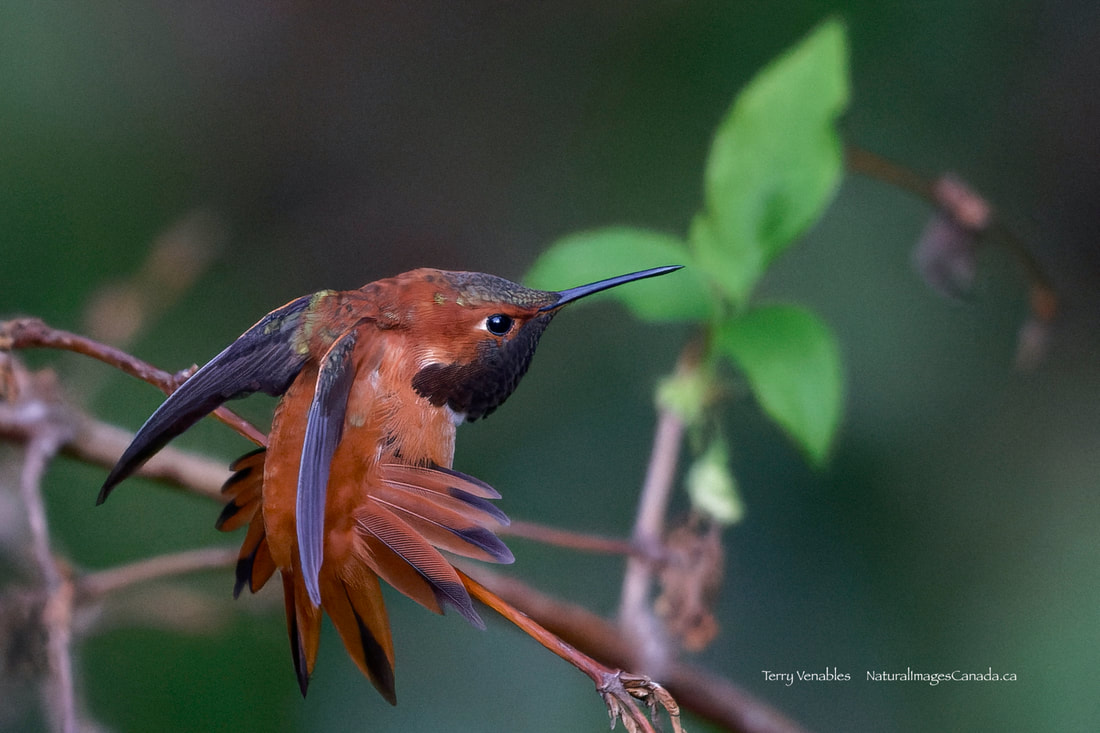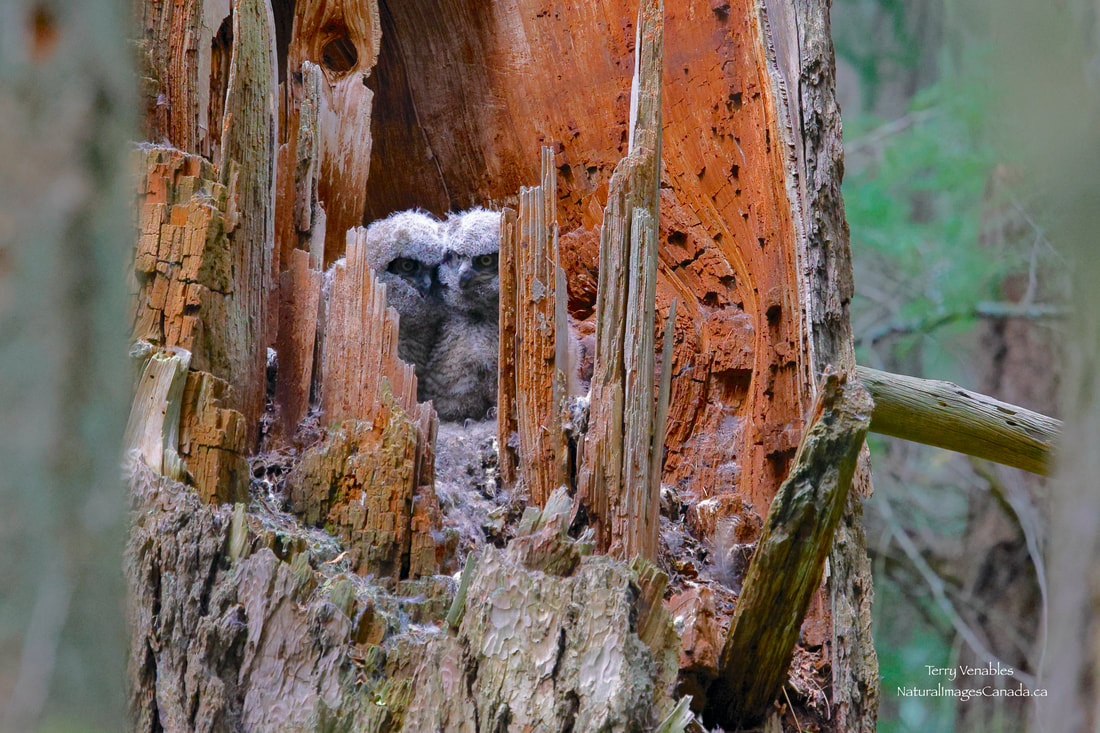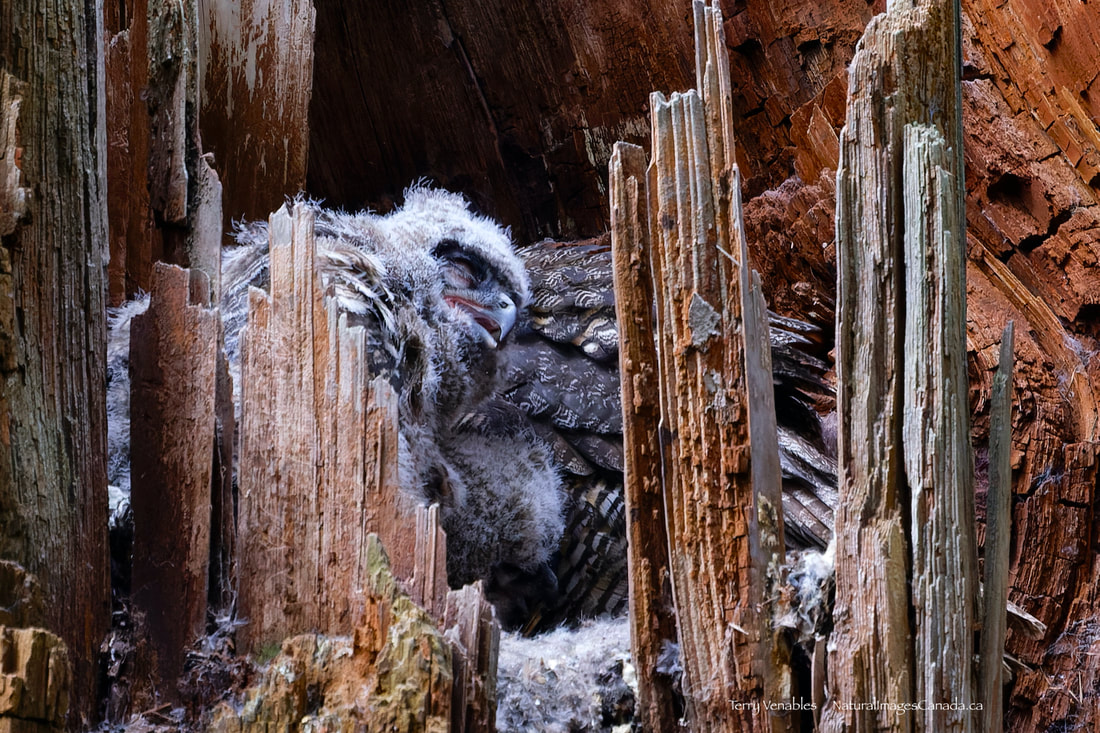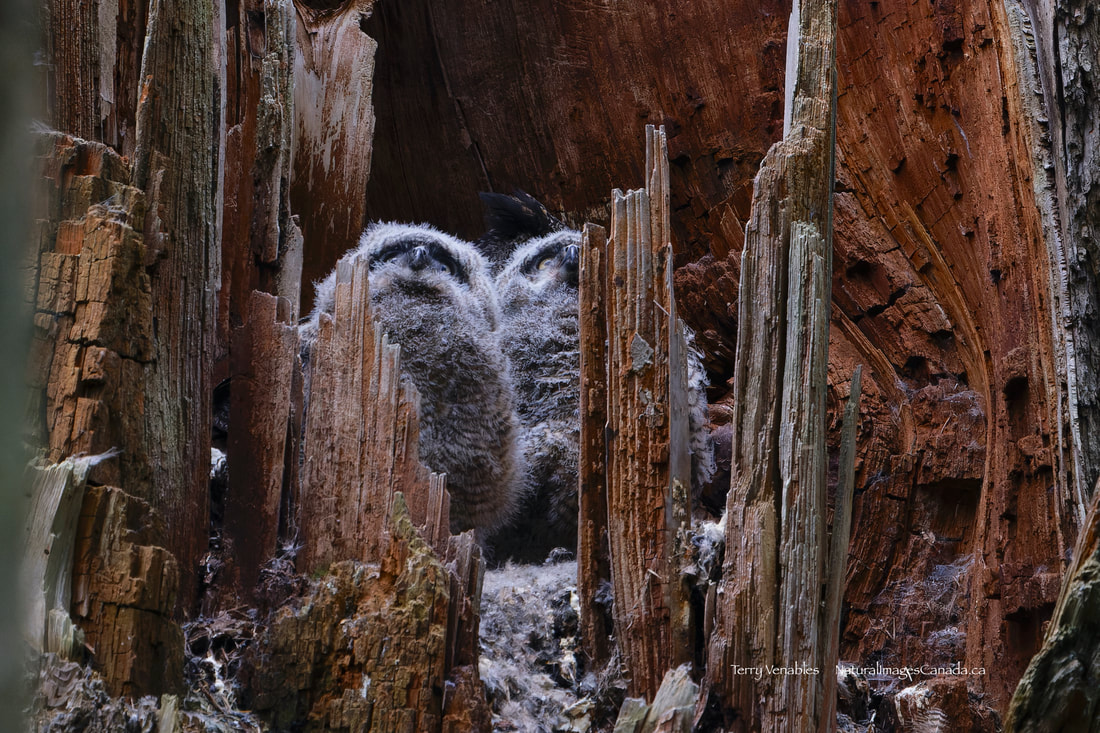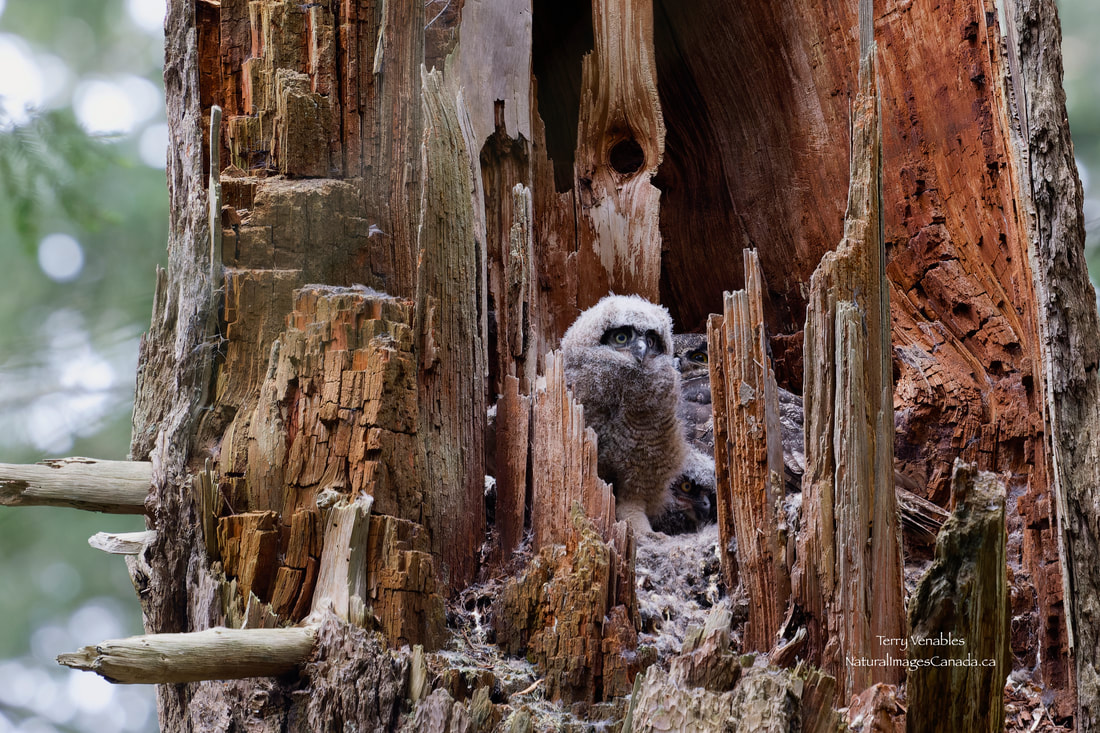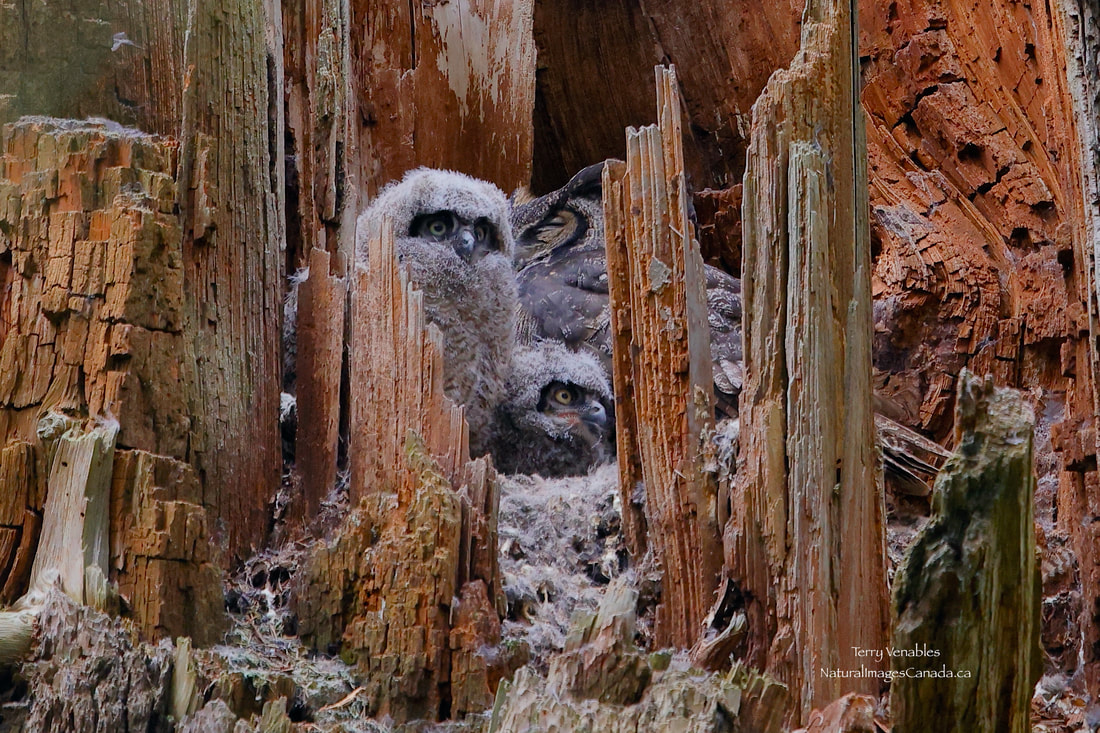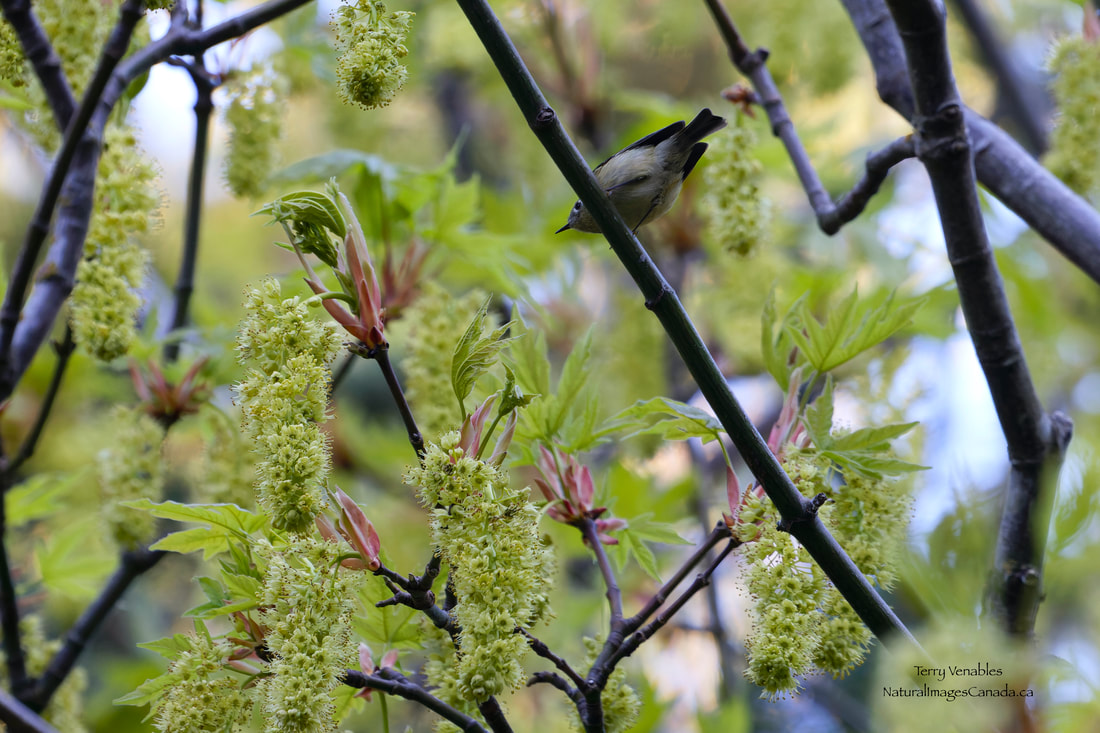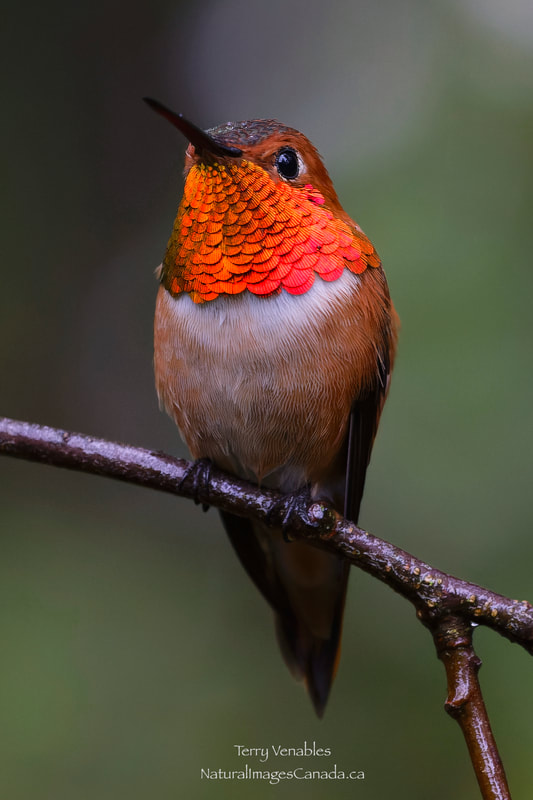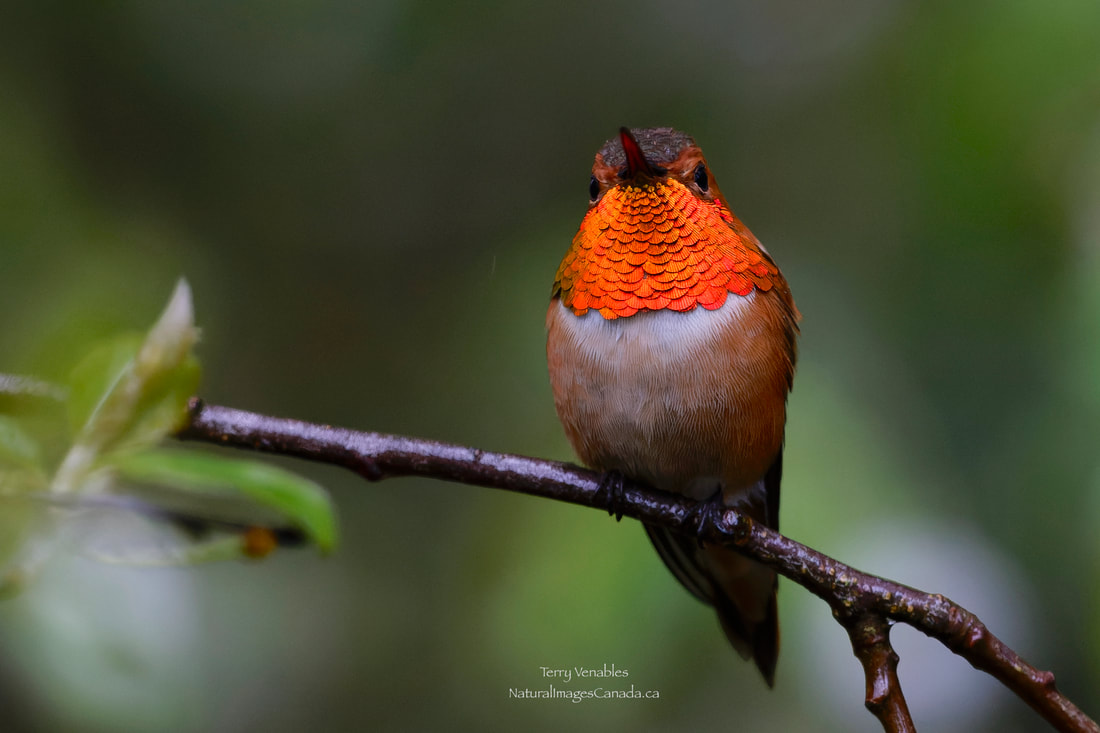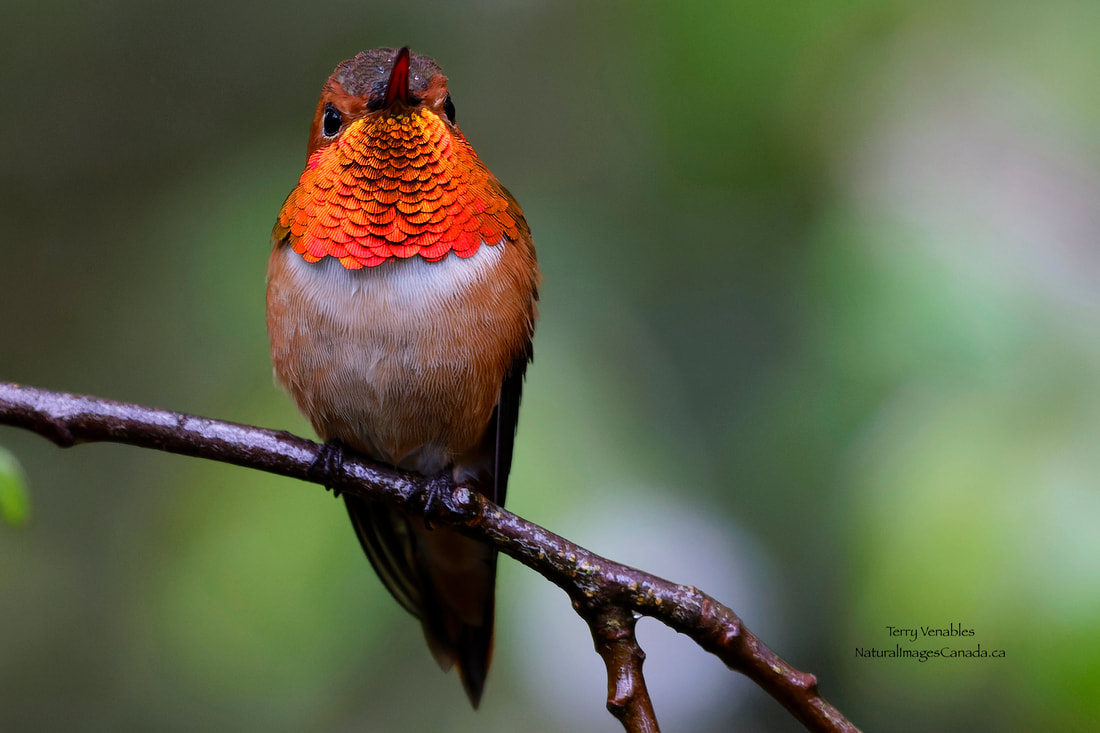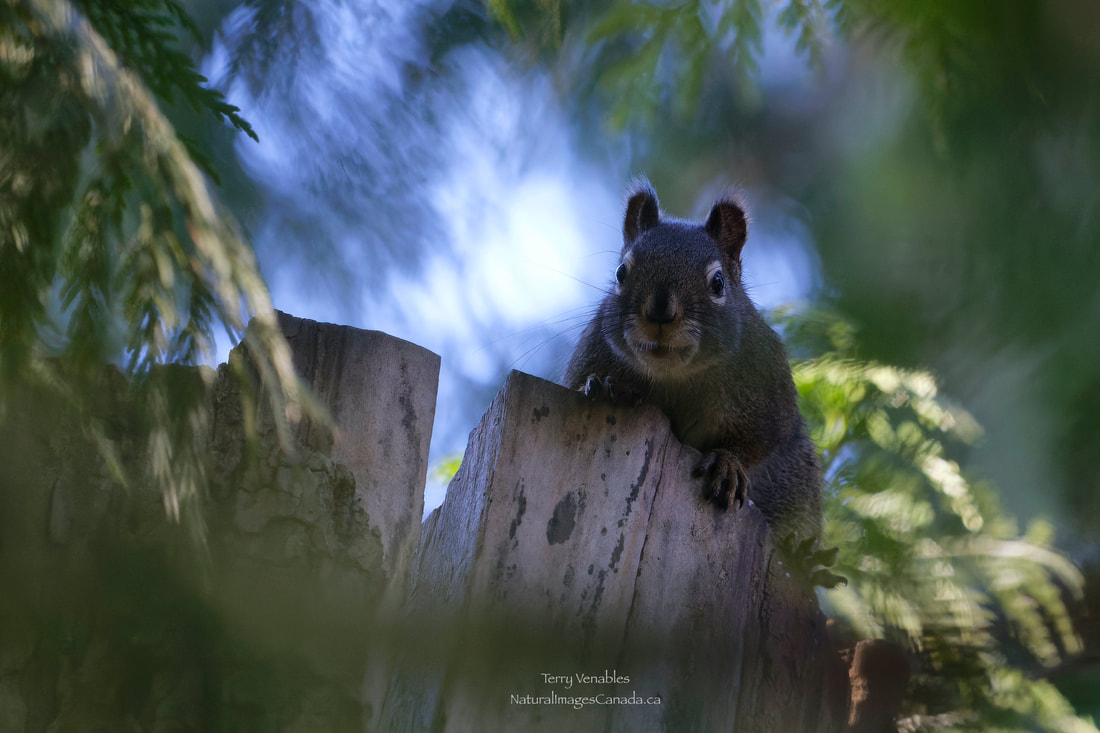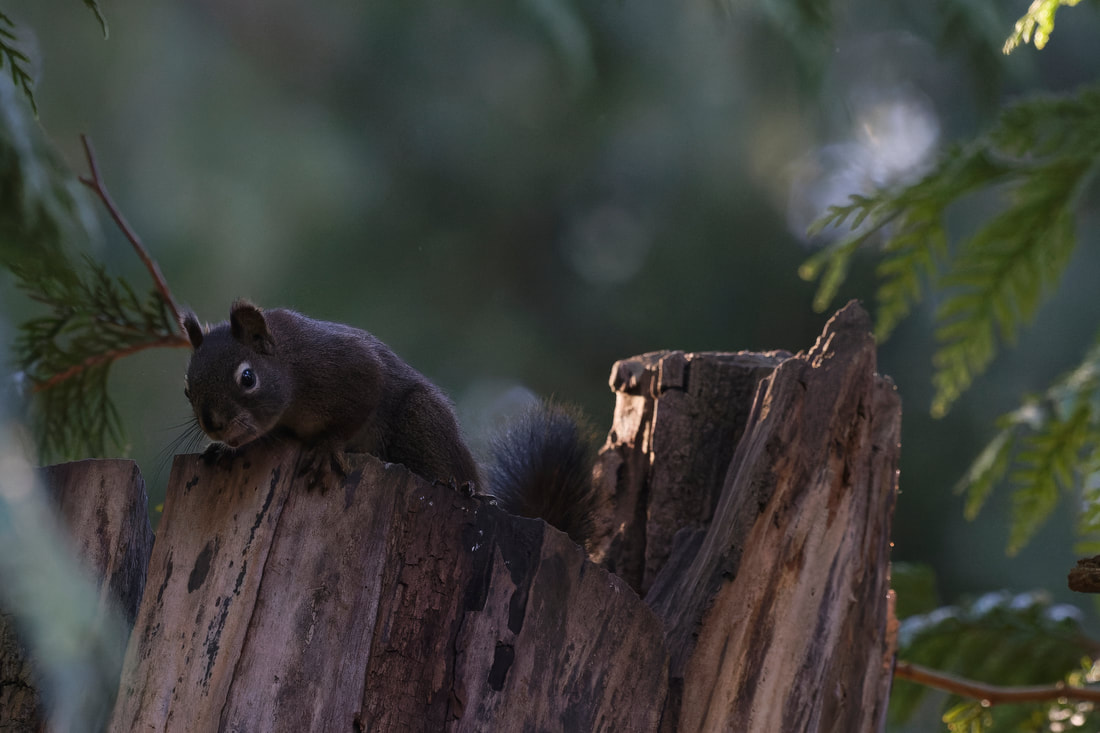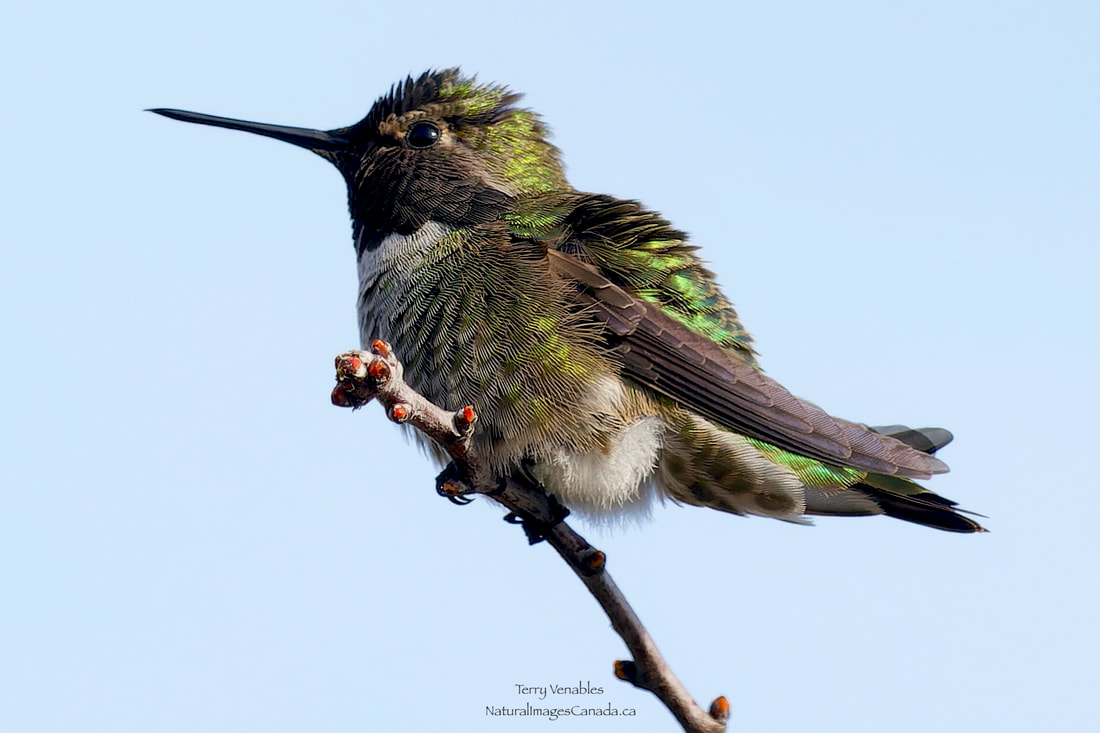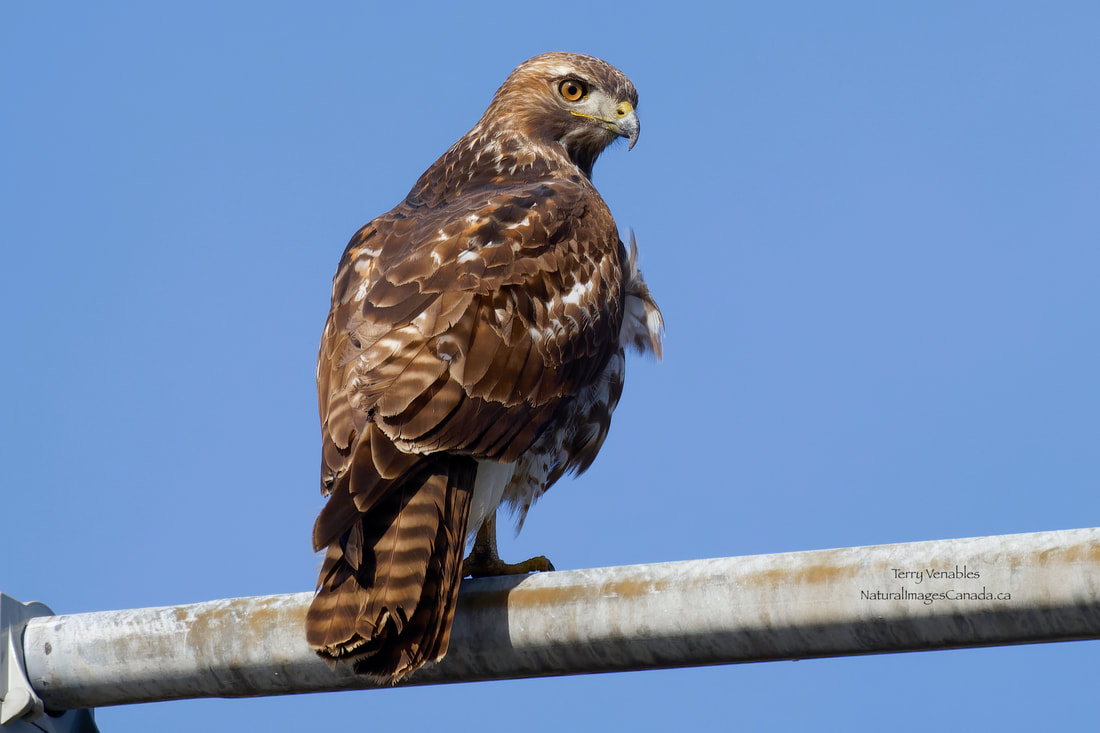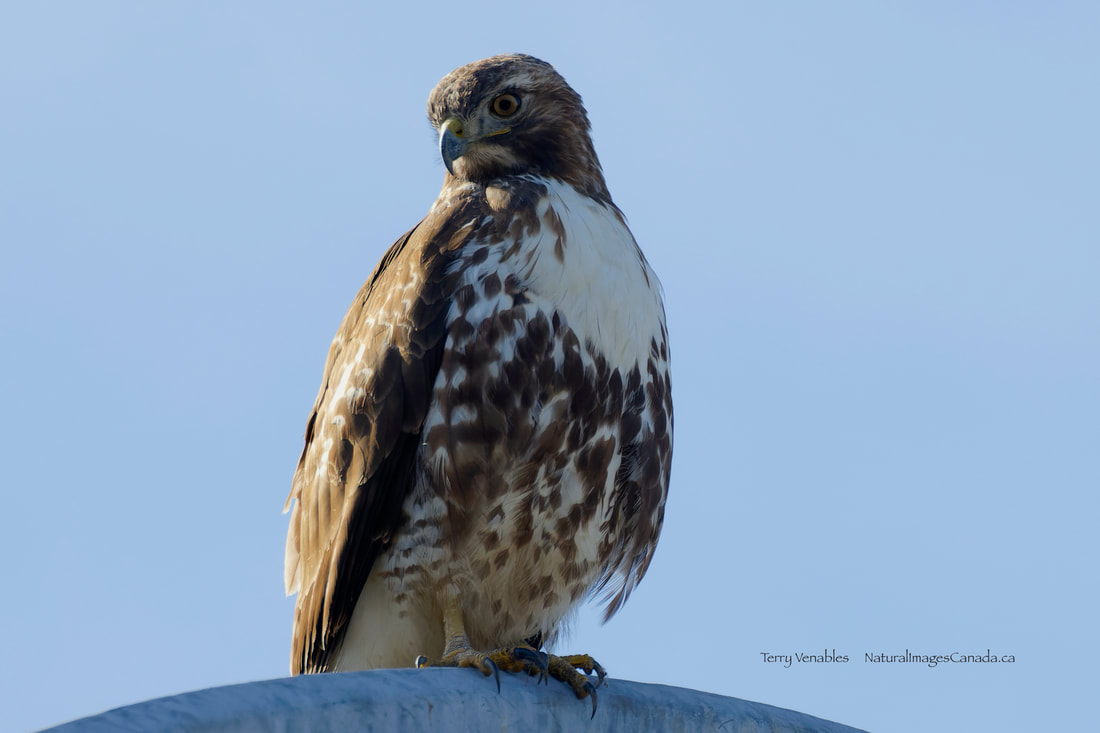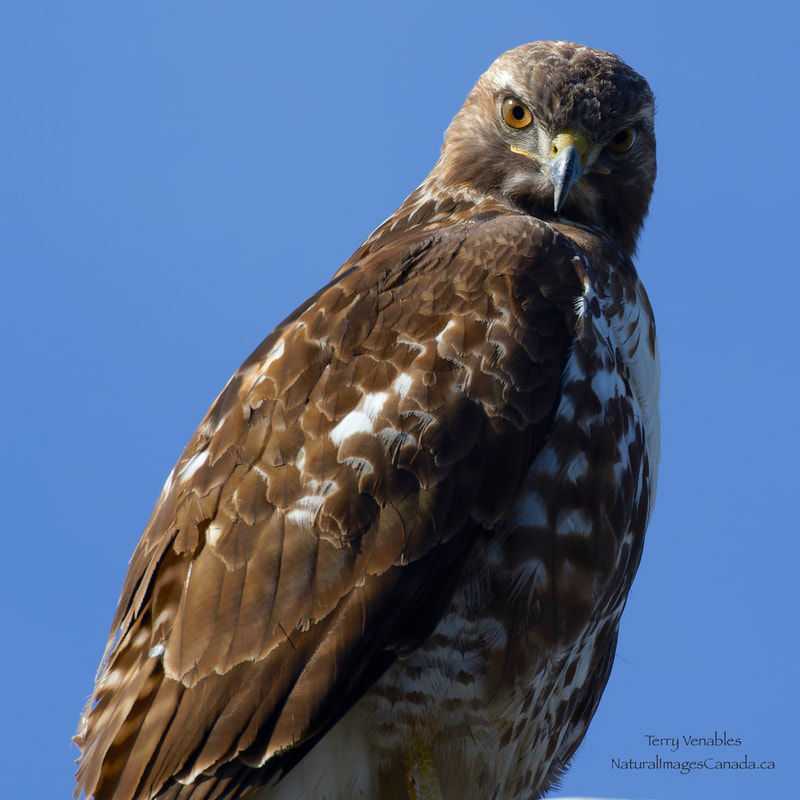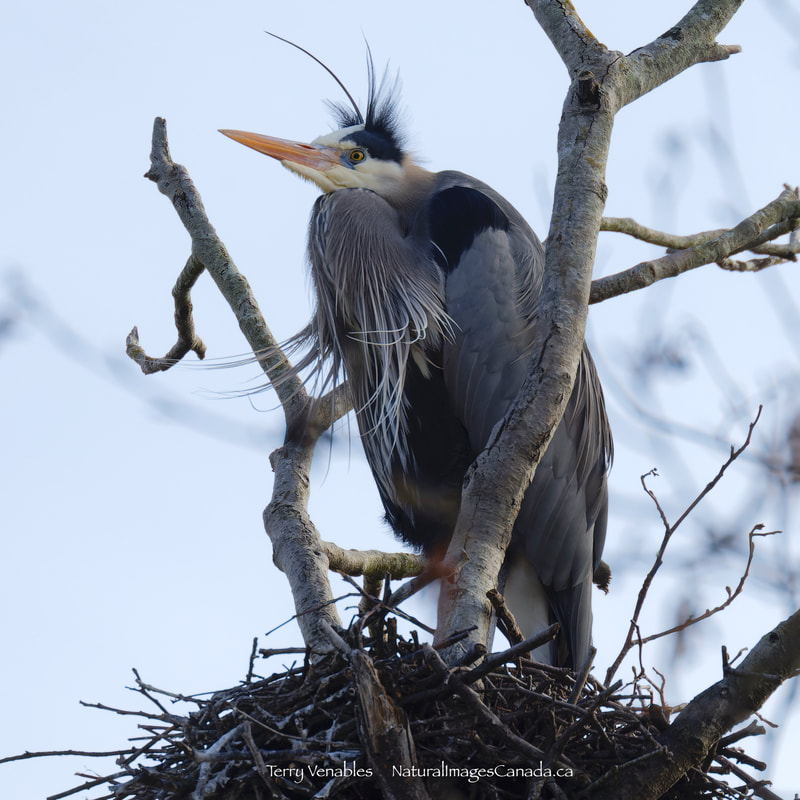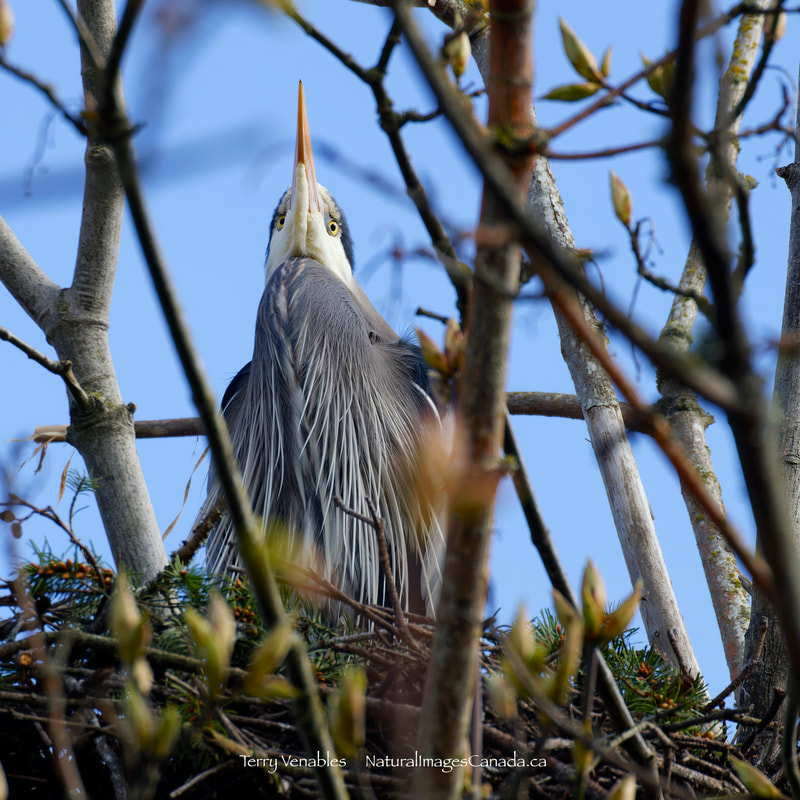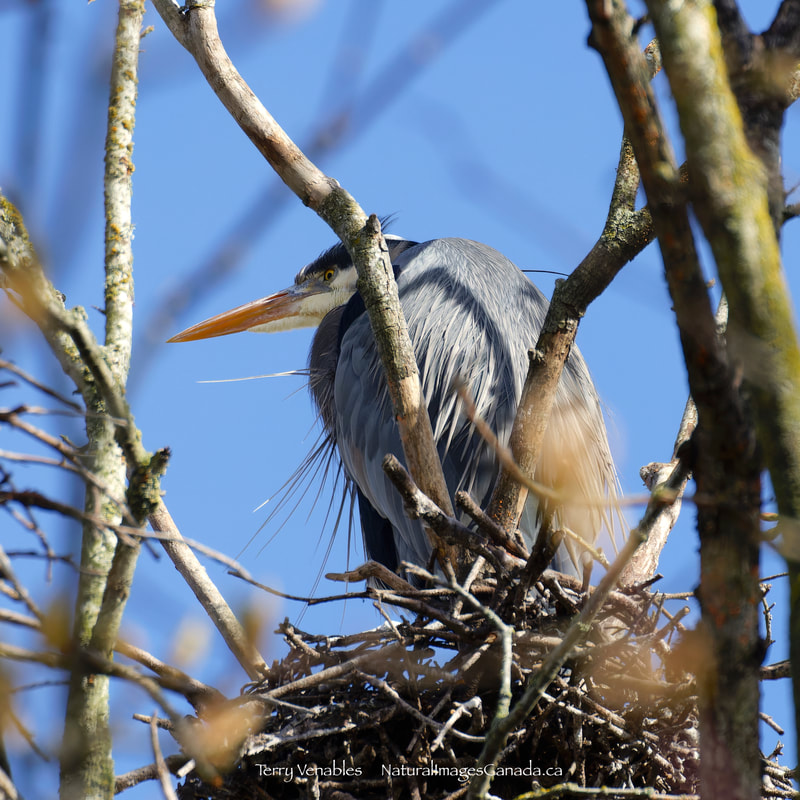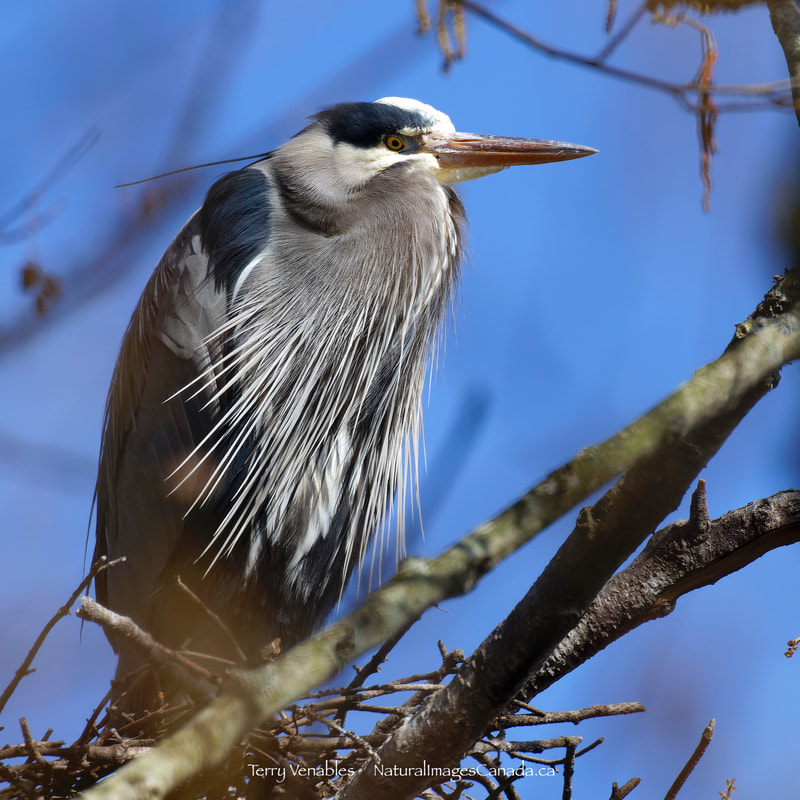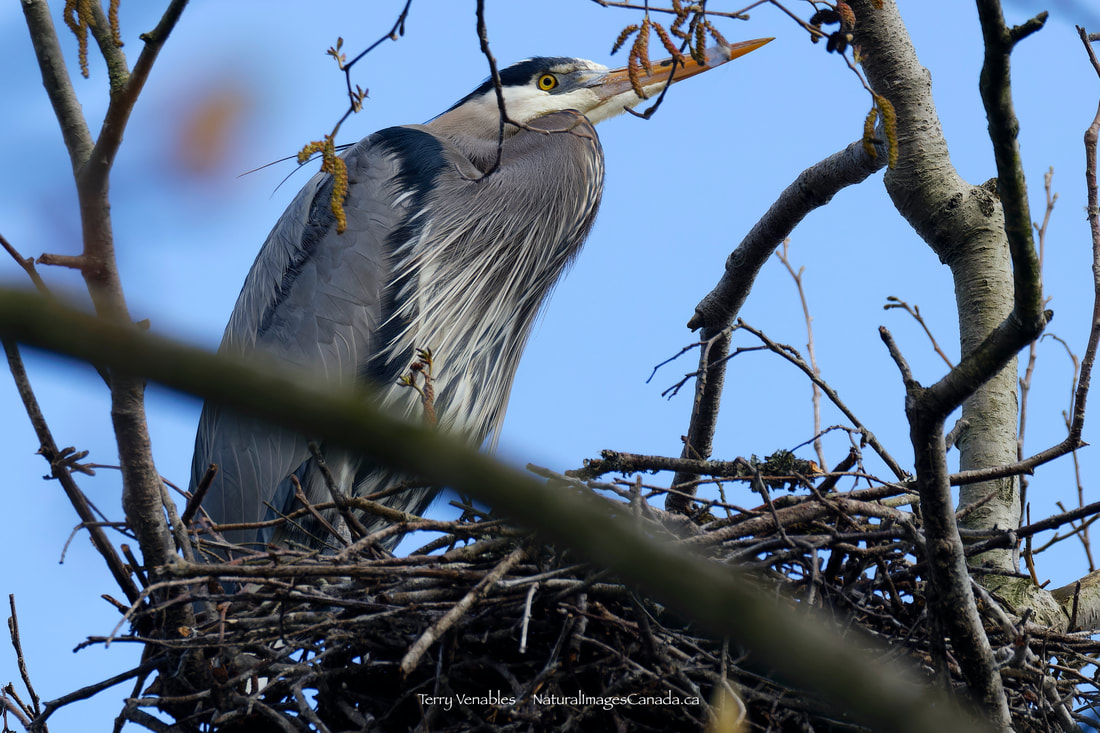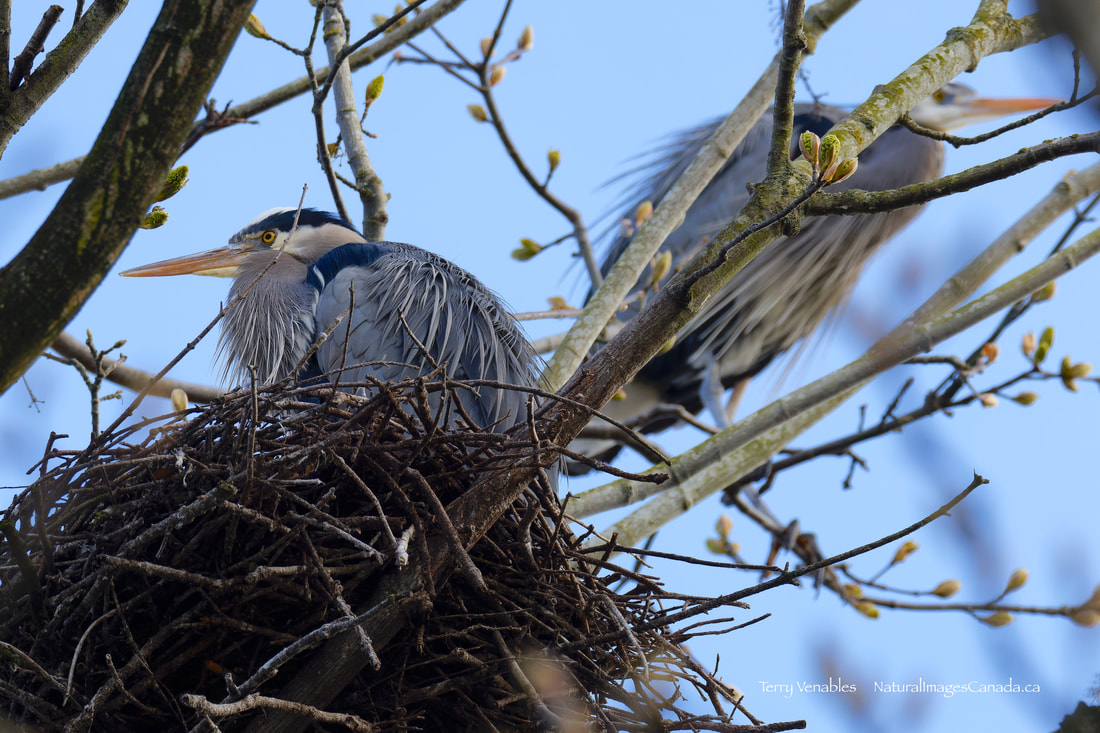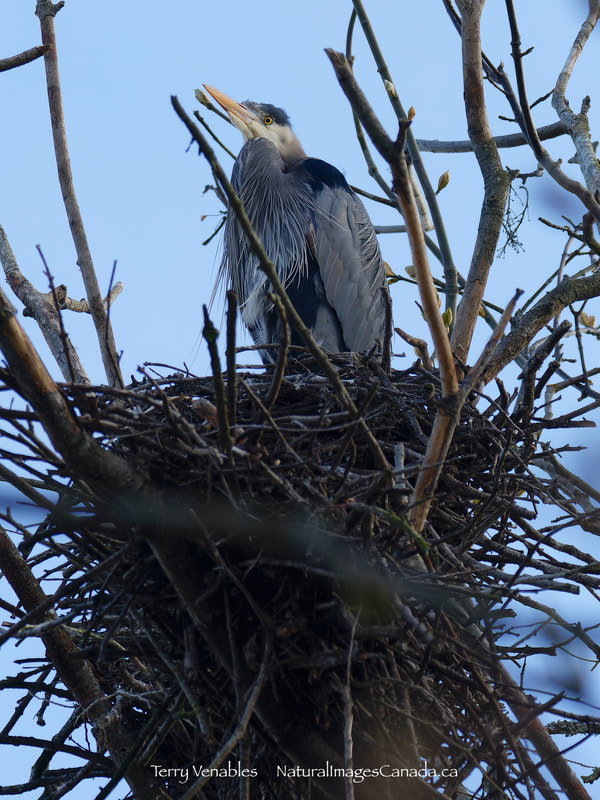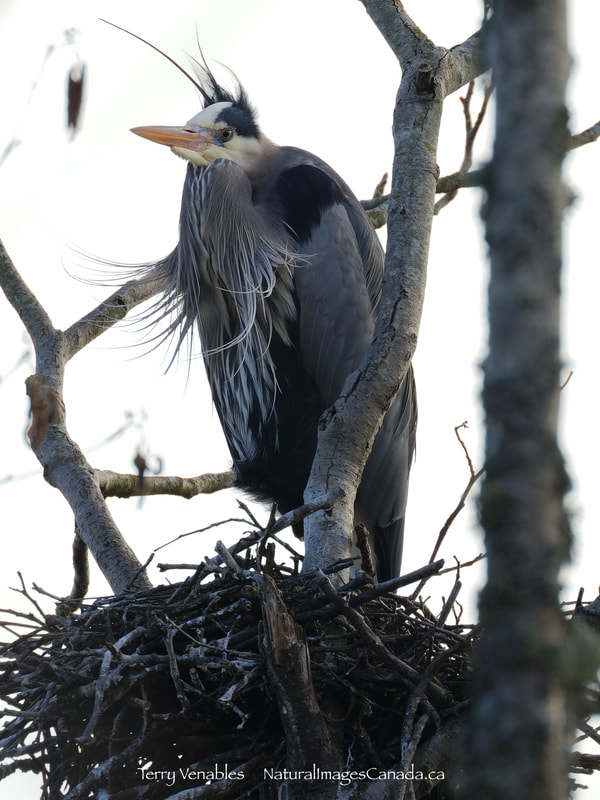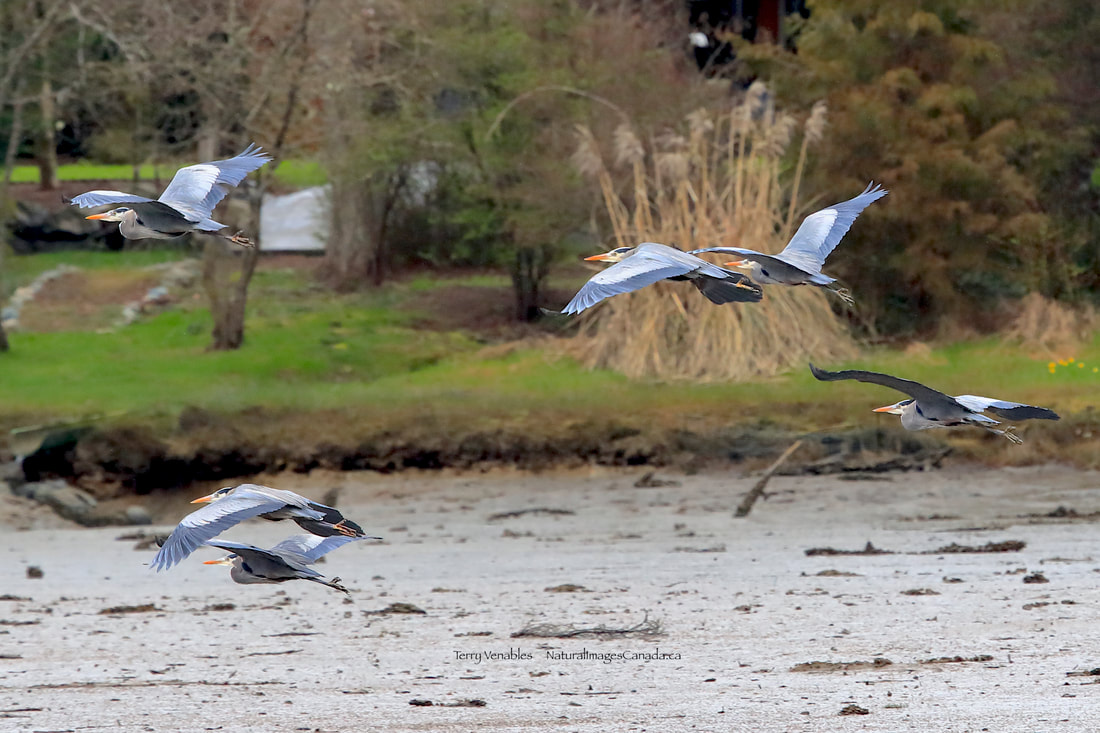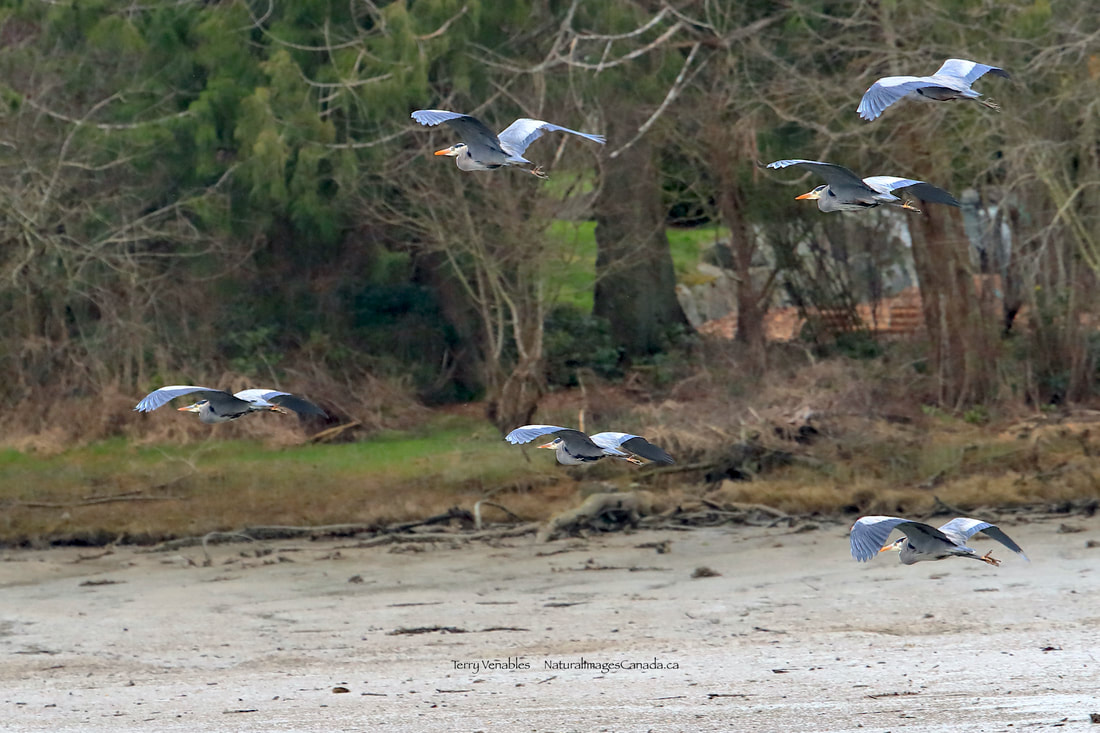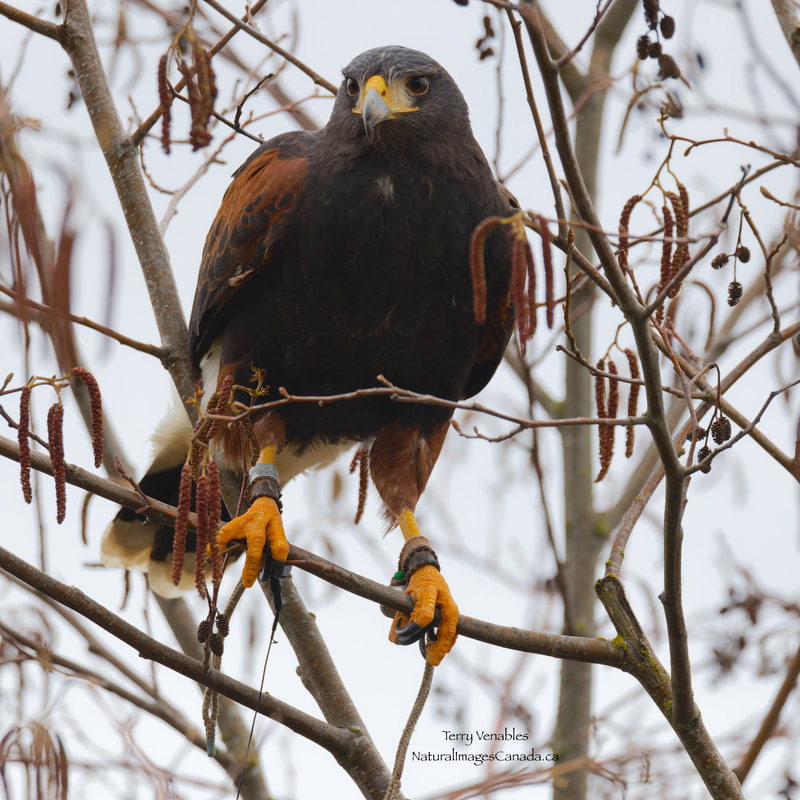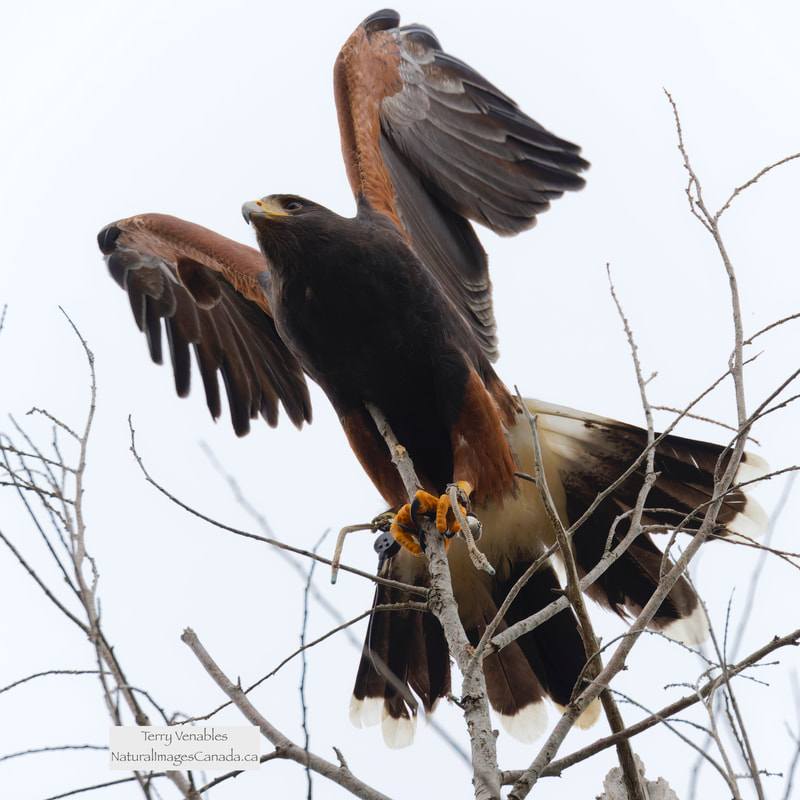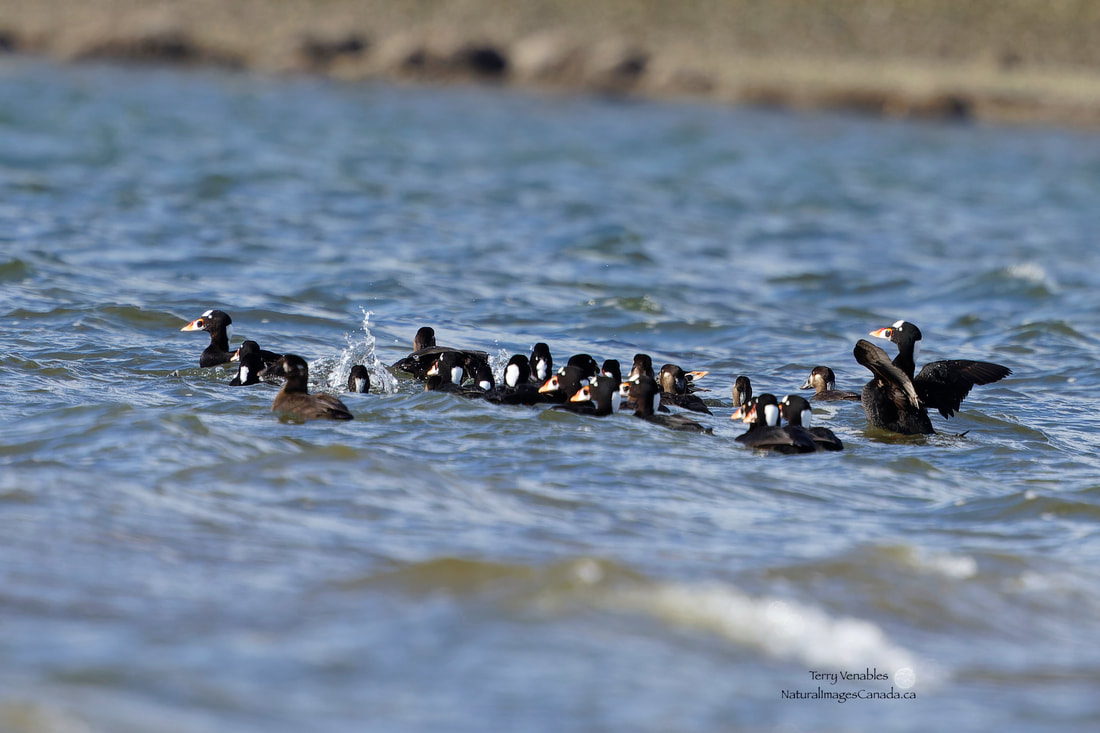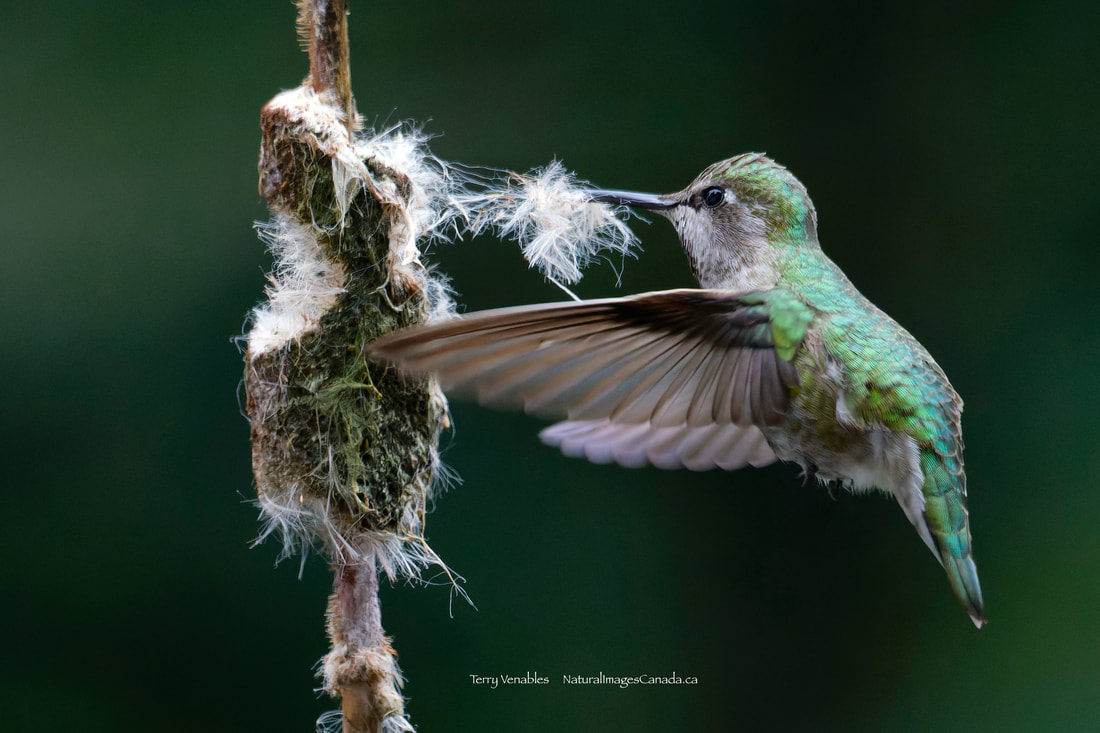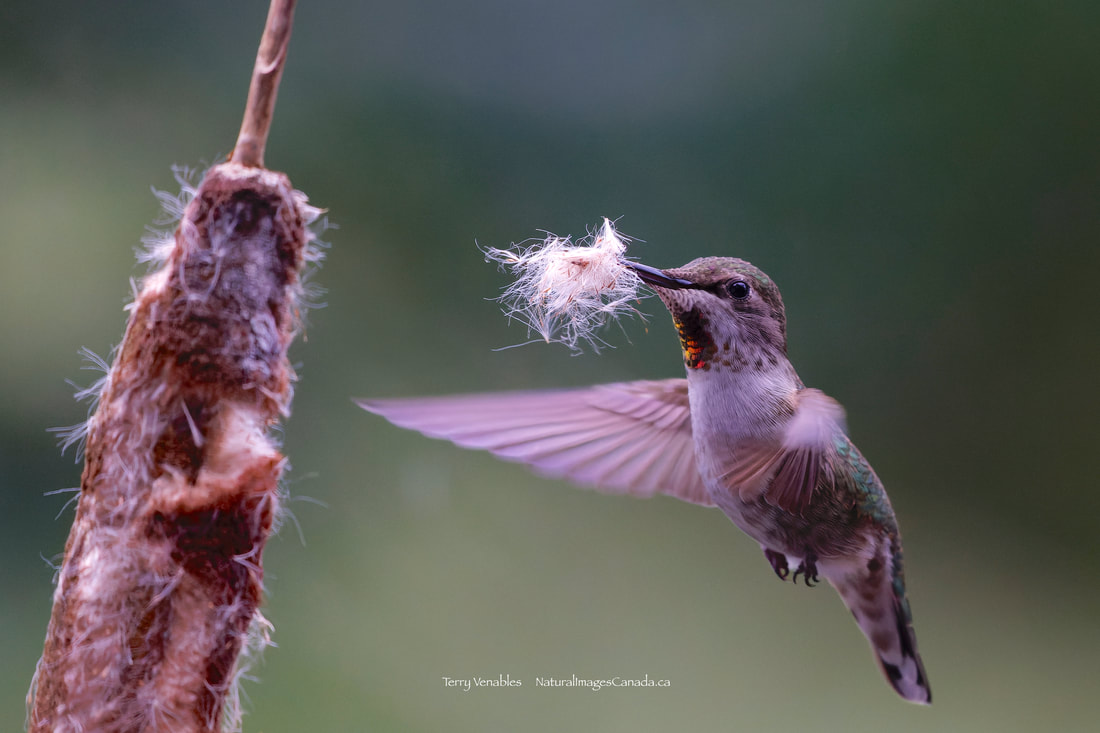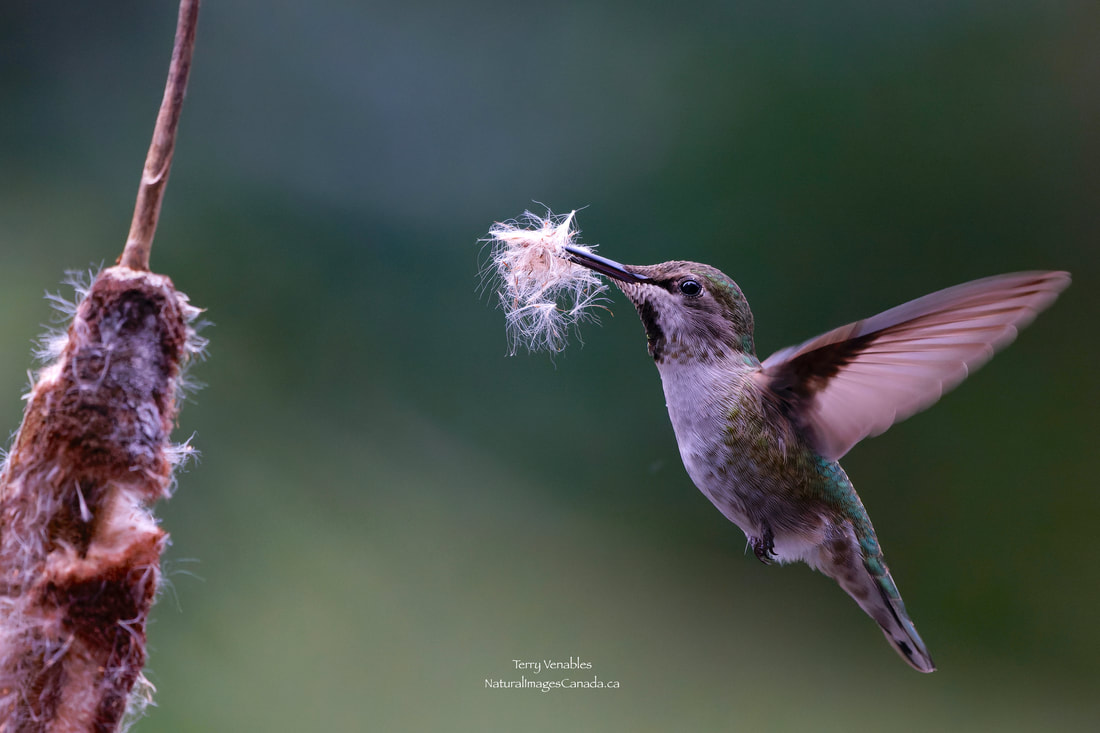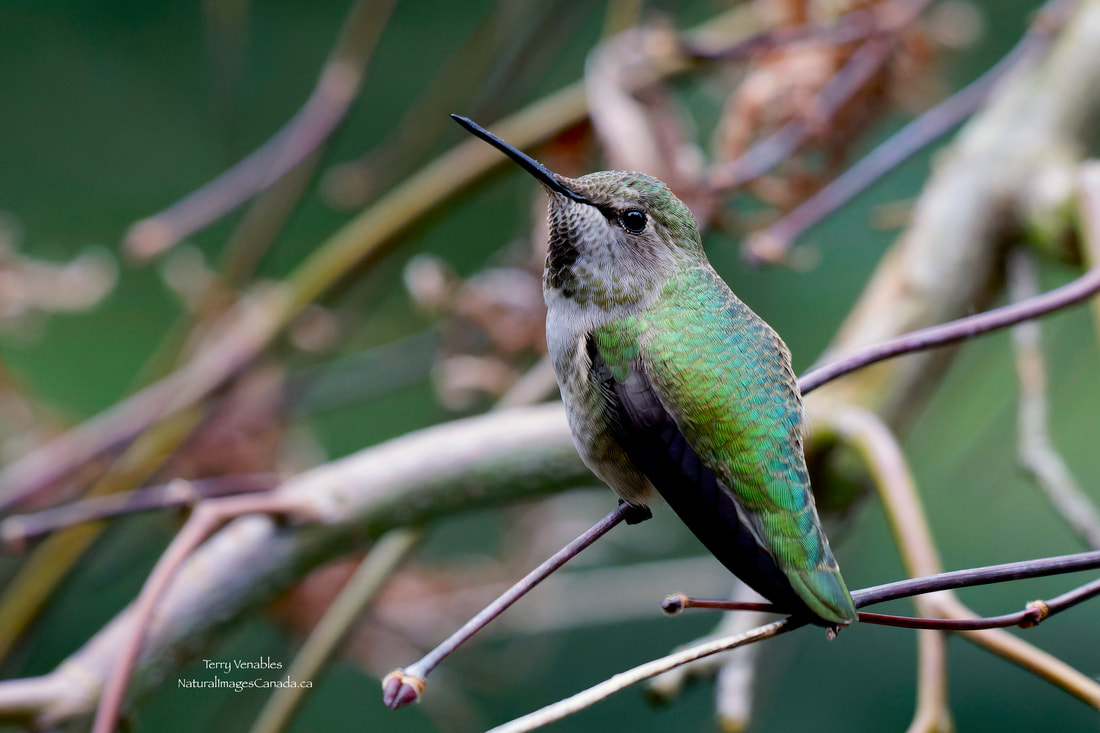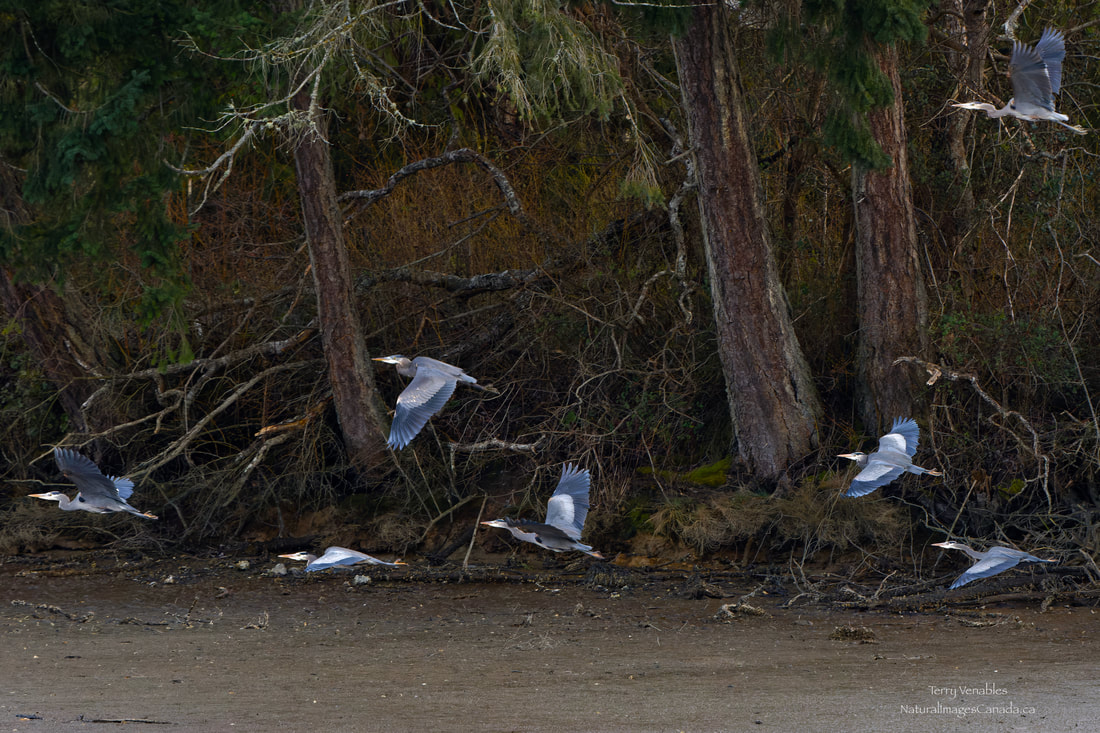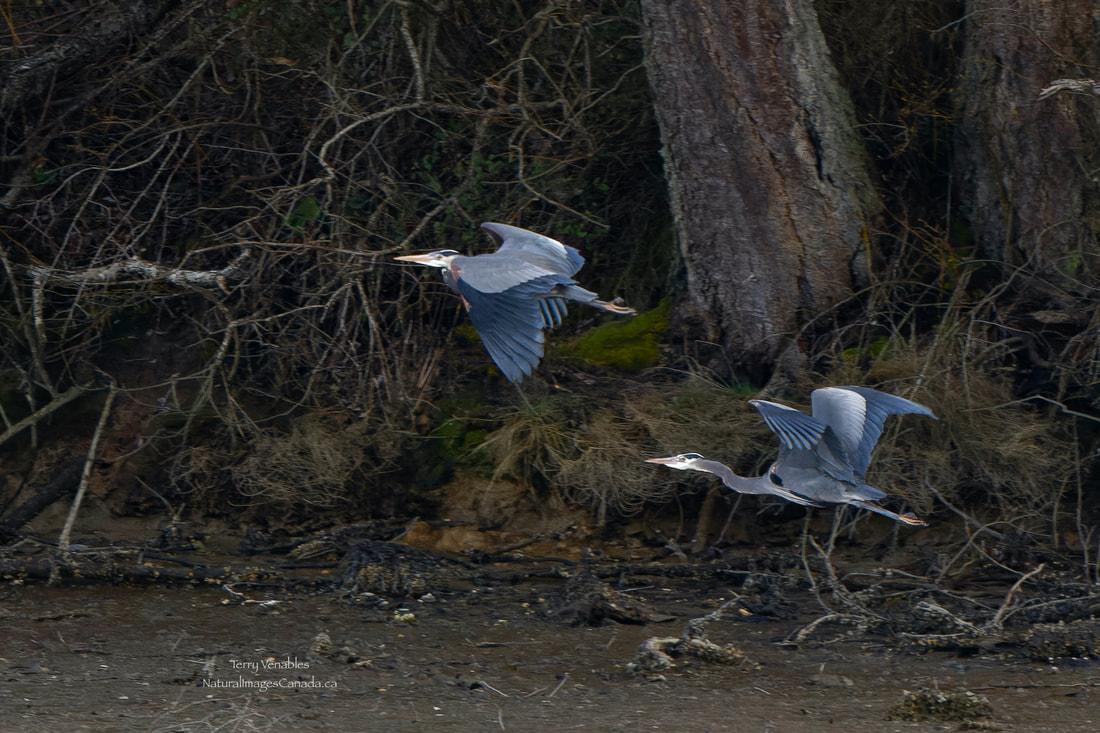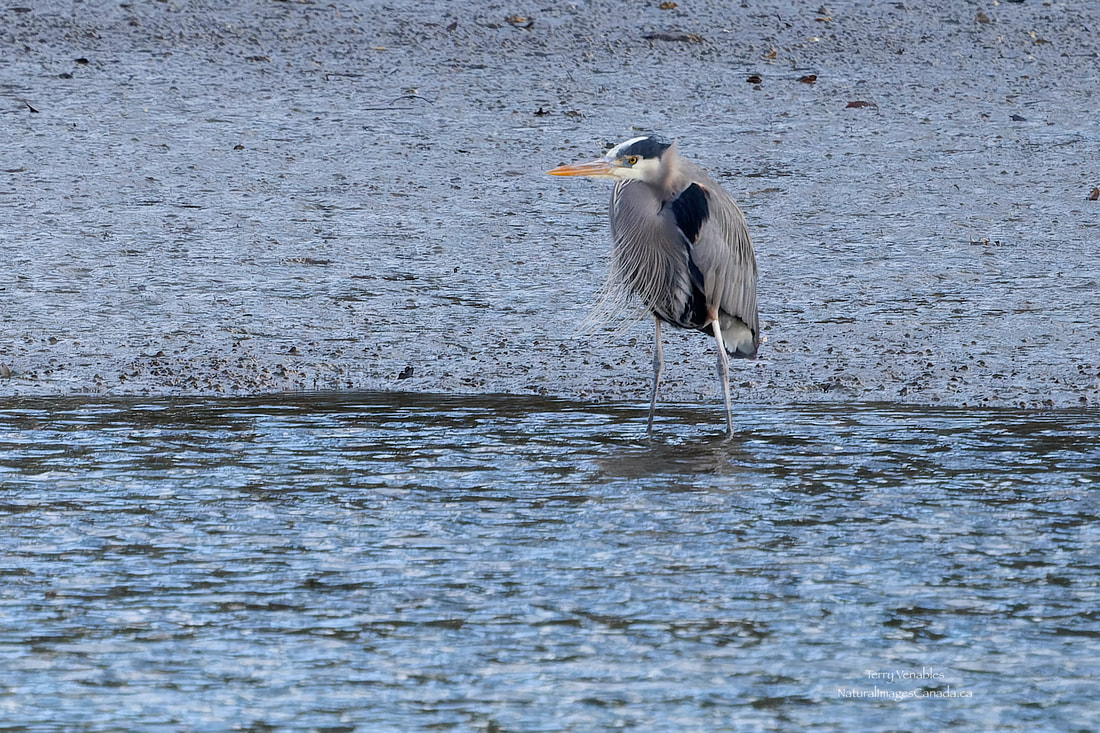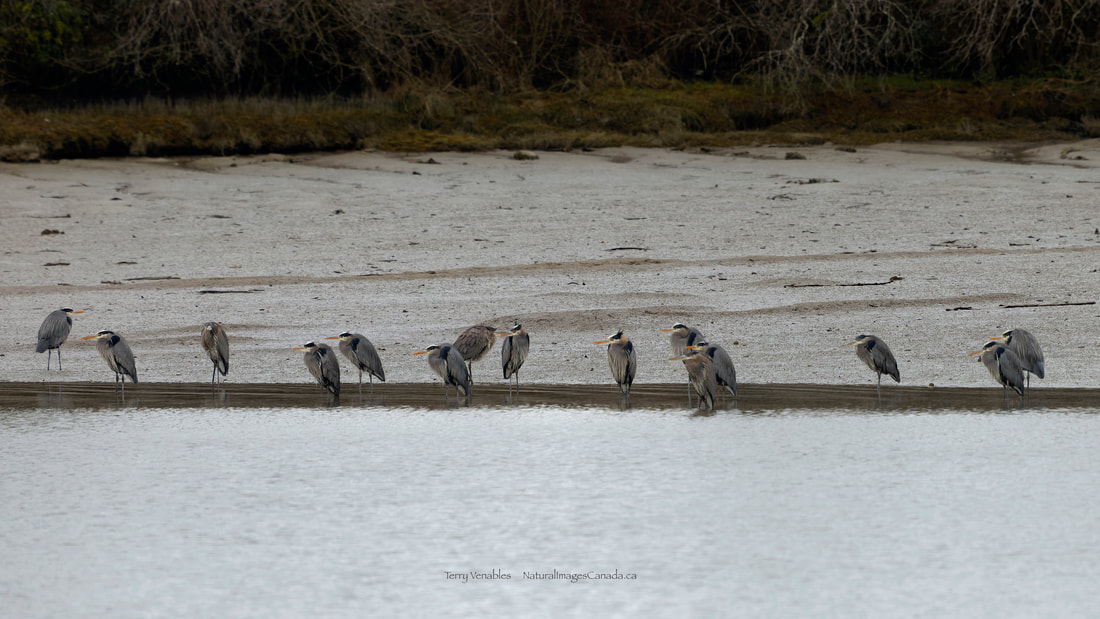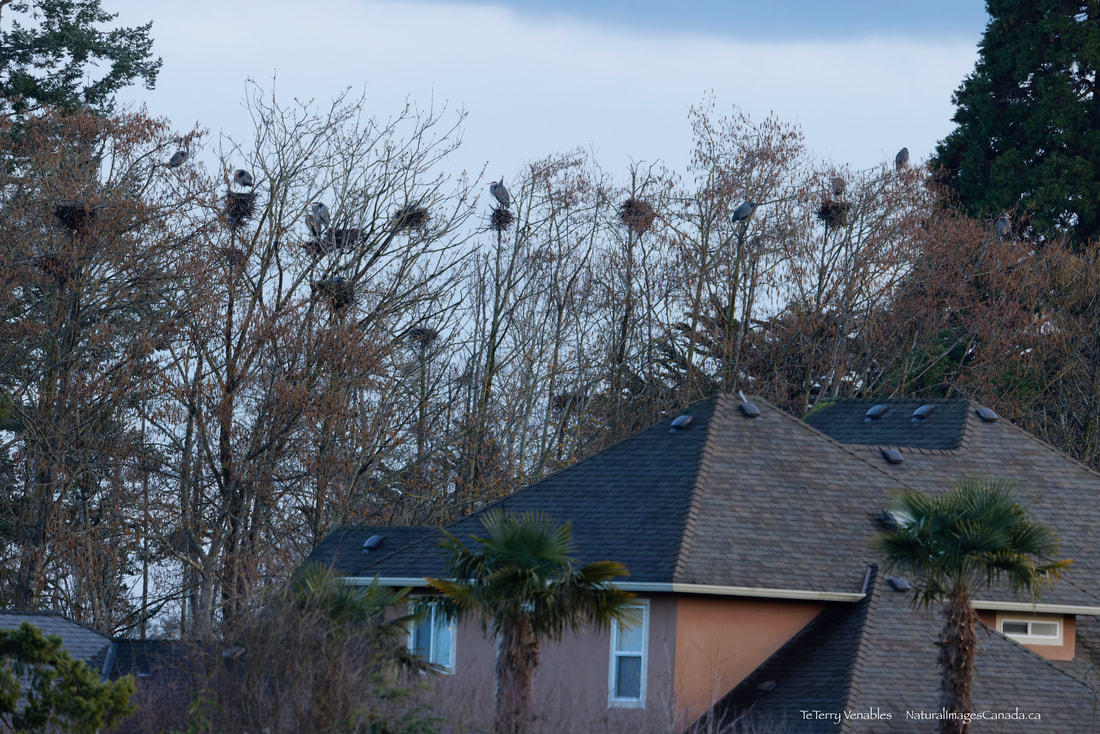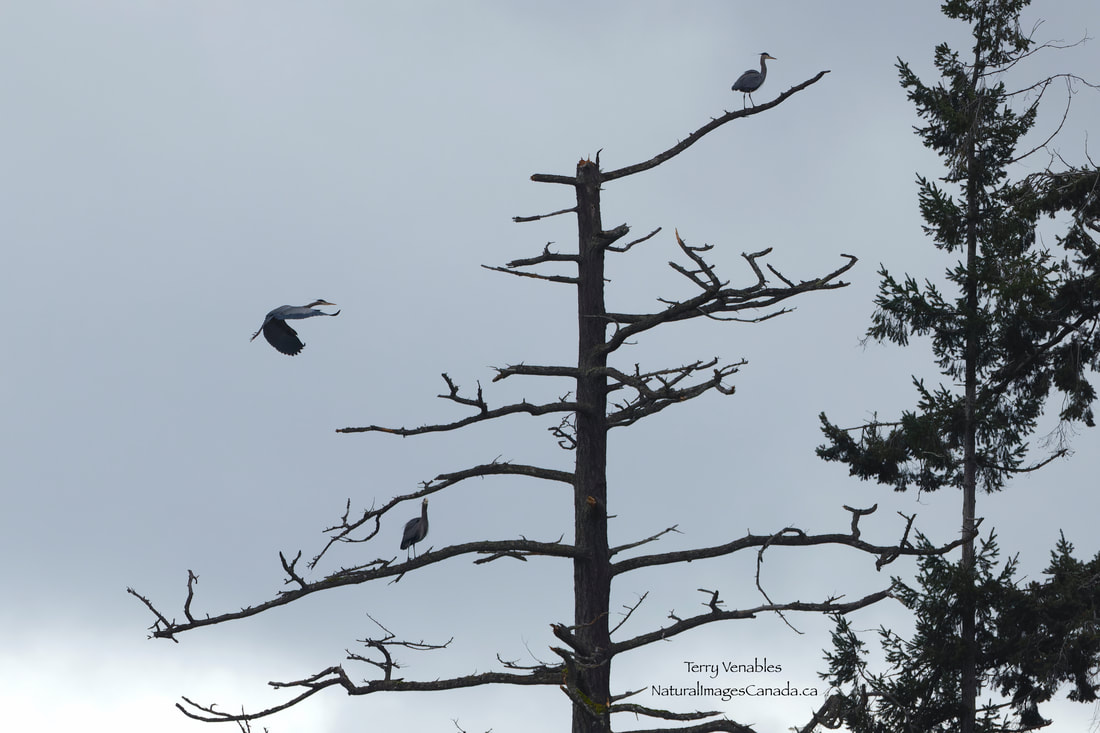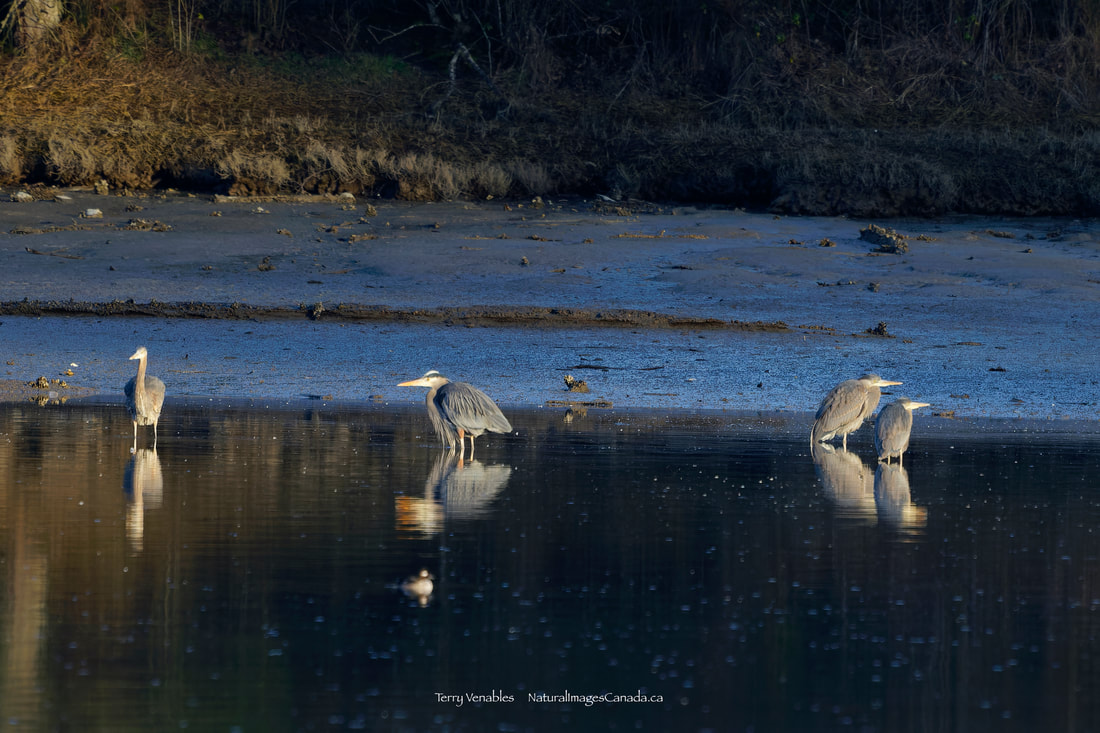|
These beautiful mini jet fighters are super active all day long but get especially ramped up in the late evenings. The past few evenings I have been observing 12 to 16 male Rufous Hummingbirds and scattered in are a number of females and several Anna's Hummingbirds. The sound of all those tiny wings manoeuvring is quite fantastic! There are many fast action skirmishes around the feeders at dusk like this one between 2 Rufous females... I want that spot!!! No, its mine!!! :))
0 Comments
As the light fades and darkness takes over for the night, hummingbirds gater at my feeders in numbers . It is the only time of day when I will see several birds gathering together on 1 feeder. They all know that survival to get through the night depends on "filling the tank" with nectar, prior to finding a roosting place , then sleeping through the dark hours in a state of "torper" Which is pretty close to suspended animation. ** Female on left and male on right ... Rufous Hummingbirds ** A final note today about "irridescence" Unless you are a keen observer of nature you may find this feature confusing. Some feathers possess this quality and when the light hits them at a certain angle the feathers light up like neon! As in the case of hummingbirds , especially the males. Their beautiful throat feathers when positioned at a sharp angle simply radiate light that looks like an electric current has lit up the feathers. This is an amazing bit of nature and has useful merit when attracting a female and also used to intimidate adversaries such as competing males or to scare off other species.
* IRRIDESCENCE ... the quality of showing many bright colours that change with movement Here is the one baby GHO found this morning having a wing stretch after mom finished preening the little gaffer. It was quite a long way from the nest site , and surprisingly had been there for the past 2 days. **** Thank you to the dear lady who guided me to this location!!! So appreciated! Good Morning! Generally I let my images speak for themselves but I want to thank all the lovely folks I met yesterday at this amazing scene in the woods. These Great Horned owls are amazing but the beautiful people passing by and photographers documenting this raw and wild bit of nature fill me with gratitude. I love seeing parents with kids who are taken with the natural world and many with dogs out enjoying the woods. I so appreciate all your passing comments, time spent observing this nest , questions asked and thoughts about nature. A special thanks to the 3 photographers I spoke with yesterday... Thank you for your kind conversations and assistance in figuring out a setting on my camera!!! The first excitement on Saturday morning was an interloper just above the nest site! The distinctive call of a Raven was clearly heard and it cause some commotion among the little owl family. The photo above shows Mom and 1 owlet looking skyward toward the threat. (Ravens and owls can clash when their territories overlap... Both species compete for food sources and tend to be natural enemies) Owls are very expressive birds ..Look at their faces in the moments of danger! Unless you have observed many owls, this is an unusual sight. Momma Owl was calling the alarm through a series of hoots to the Male Owl who was sitting hidden in a nearby tree. ( He was hooting back to her) I can also imagine the Hooting was to tell the Raven to steer clear of her nest or there would be consequences. Look at her throat feathers. She puffs up a pouch (almost like bagpipes) then the hoots are performed. I also shot a short video of this which I will post below. Don't mess with " momma bear" ..... Raven.... After the Raven left the scene the second Owlet emerged from a morning nap and came out to enjoy Mom's gentle touch. Owls need to keep their feathers tidy and clean so they do a terrific amount of preening on their own feathers and also lend a helping hand ( beak) to siblings and parents. Owls appear to be very affectionate to one another.. A fierce creature when hunting for food or defending territory, but within a family group they show great gentleness. Image from today (April 10th) Sleepy afternoon for the owls so very few images, but thank you to everyone who stopped by to ask questions and talk about nature. Some delightful kids who were quite excited about Owls!!! And thank you for sharing your dogs with me too ... Cheers... see you one day next week.... TerryV
Mom flies in to help with rabbit lunch Lots of Wing exercising today for cross eyed Mary :)) Here comes Mom ... Baby Mary was snoozing but woke up as Mom glided over her head and became Baby Owl Buddha ... (9 images in this slide show)
This is a full frame (uncropped image) of the Great Horned Owls nest I visited again yesterday. Momma Owl was snoozing while perched on a branch just outside the hollow where the kids are cuddled. Winkin Blinkin and Scowl 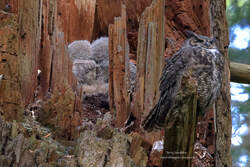 The kids look like they are conspiring on something ... Or just napping? Slide show above is a group of 8 photos i captured as I noticed a tiny bird hovering across the owls nest. A female Annas hummingbird can be seen (look closely) with a beak full of owl down. Imagine how cozy her babies will be nestled into that baby owl down duvet!!!
This nest is a milestone in my photographic life. Finding a nest is difficult enough but to have one where images can be made while the babies are small is nothing short of amazing. Thanks again Mizz K for sharing yiur find with me!!! baby was grooming itself here All that fluffy down must get itchy Birds (even very young) are always aware of their surroundings.
Their very survival depends on this! Both owlets were looking up in unison as a loud float-plane passed overhead. I could just imagine them marvelling at that huge noisy bird rattling across the sky... Today I had the great fortune of finding this Great Horned Owl nest. My thanks to a dear friend for giving me directions!!!
Also a big hello and thank you to the two pro photographers I met there. Thank you for the most lovely visits and kindness!!! Only seeing 1 red squirrel around these days :( Its been a tough winter for this scarce native.18/3/2024 Its gotta be tough guarding the nest territory ... You can tell by the look on this Heron's face! :) This afternoon I spent 1/2 an hour back on the bay where yesterday I saw 8 78 G B Herons. 3 were the only obvious ones fishing along the shoreline then after a few minutes about 2 dozen came from their perches and flew across in front of me. Here are 7 from that group that suddenly appeared. While watching the Herons, a flight of Greenwing Teal landed almost right in front of me
The Herons were mostly gathered along the beach waiting for fishing opportunities but also lots were perched in nearby trees. This shot is the closest Heron colony and just a short hop from the beach where I was observing so many Herons. I believe I counted 16 - 18 nests in this small grove of Alder trees. This image above was a few hours later in warmer air (sun broke through) Less Herons were still around but many were roosting in nearby trees.
|
Archives
April 2024
Author
Summer 2023.. I just received notice that my blog has been awarded a distinction of being one of the top 10 photography blogs in Canada.
* All images and content copyright Terry Venables and NaturalImagesCanada *
|
